Hey, it's Khalid here, and in this document, I'm going to show you exactly how I built a High Ticket Dropshipping store from $0 to $1m+ in just 34 weeks without handling any inventory or doing traditional dropshipping. I've never even seen or touched the products I sell.
Now if you’ve been trying to break into eCommerce but you haven’t been able to reach the success all the dropshipping gurus talk about, pause everything and listen up because this might be the breakthrough you’ve been searching for.
If you focus and you just follow this playbook step-by-step, you’ll be at least at $10k/month profit in the next 24 weeks.
Now let me show you some evidence so you know I’ve actually done this. 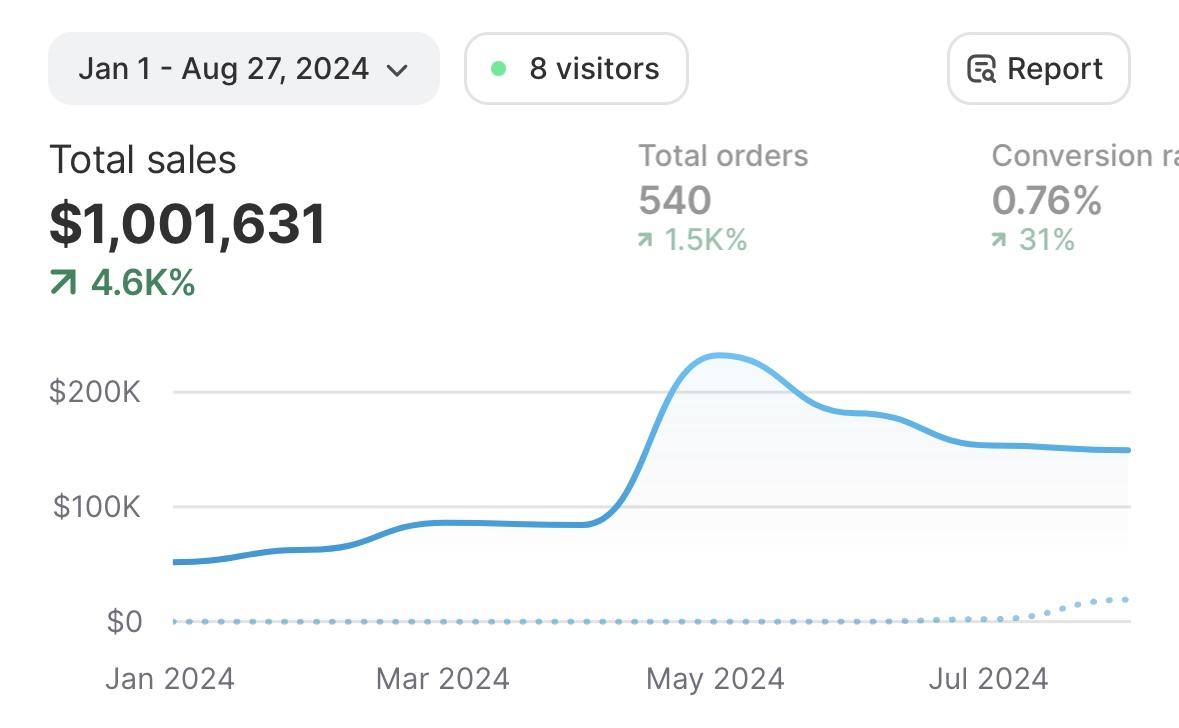
The image above is a screenshot directly taken from my Shopify Dashboard from January 1, 2024, to August 27, 2024.
Now let me tell you who this document is for:
- If you’re looking to start an eCommerce business and scale it to $10k/month profit in the next 24 weeks, this is for you.
- If you’ve tried to launch an eCommerce store in the past and failed, this is for you.
- If you’re currently struggling to try to run an eCommerce store with the traditional dropshipping model, this is for you.
- If you want to start a proper eCommerce brand but you have no money to buy large amounts of inventory, this is for you.
- If you work a 9-5 job and you want to transition into an online business, this is for you.
- If you’re trying other business models but failing to get results, this is for you.
Now let me tell you who this document is NOT for:
- If you’re looking just to make some quick cash and not run a proper business, this is not for you.
- If you want to follow the traditional over-saturated eCommerce business models and struggle, this is not for you.
- If you don’t care about delivering high-quality products to your customers, this is not for you.
- If you’re someone who’s looking for a get-rich-quick thing, this is not for you.
Now here’s the truth…
You can build an eCommerce business to $10k/month profit in 24 weeks without doing traditional dropshipping or buying inventory.
However, there’s no one talking about this model currently.
Instead, all the eCommerce gurus are promoting dropshipping with flashy YouTube videos, just to sell you courses and make more money from ads.
And the problem with building a real brand is that it requires you to put down a lot of money upfront.
I’ll show you exactly how to get around these problems and how to launch a High Ticket Dropshipping store from scratch and make at least $10k/mo profit in the next 24 weeks.
And in case you don’t know me, my name is Khalid, and in October 2023 I came across a different way of doing eCommerce.
This new way, High Ticket Dropshipping, was ultimately what allowed me to hit my first $40K/month profit in just 34 weeks, and is still growing.
But before I came across this way, much like everyone who tries to get into eCommerce, I started by doing traditional/low ticket dropshipping.
Back in September 2023, I had just finished High School.
At this time I had 10 weeks before my first year of college started so I committed myself to finding a way to make money until then.
I had heard of dropshipping before, so I just bought a $200 course and started doing it.
The course was extremely outdated. I tried building and running multiple stores but all of them failed.
At some point, I came across the High Ticket Dropshipping model and joined a program that provided up to date information but they were gatekeeping information from students.
I decided to go all in on High Ticket eCom and in January 2024, Mohammed (my business partner) and I managed to hit that $10K/month profit mark.
I can tell you for sure the first $10K is the hardest because we’re already on track to hit at least $80K/profit months projected by the end of 2024.
As you can see, the journey was not easy at all and it was filled with multiple attempts, failures, and even being pressured into college.
Because I know how hard it was for me, I decided to help you potentially avoid some of the failures and pain I went through myself.
As a result, I decided to break down the process I’ve used to create these results for myself.
That's why I've decided to break down the exact process I’ve used to achieve these results.
In the following steps, I’ll lay out the entire process A to Z of what I did to accomplish these results, and hopefully, you will use these steps to launch a profitable High Ticket eCom store and hit at least $10k/month profit in the next 24 weeks.
High Ticket Dropshipping Explained
Now, let me tell you right away, this is not Rocket Science. But at the same time, the barrier of entry is not as low as simply setting up a Shopify store, connecting it to Oberlo, and start running ads.
This is actually a good thing for you because if you actually get good at this, you’ll have way less competition.
If you run some numbers, you’re also going to realize that it’s much more profitable to do eCommerce this way, regardless of your profit margins because of the sheer price of the items you’re selling.
When you do the math, you'll see that this way of doing eCommerce makes more money, even if your profit margins aren't huge.
Why? Because you're selling expensive stuff.
For example:
If you sell a $50 product at 20% profit margin, that’s $10 per sale. It will take you 10 sales to make $100 of profit.
But If you sell a $1,000 item at a 10% net profit margin after you pay for the product, shipping, advertising, software, and your team, that’s still $100 per sale.
It literally only takes one sale at half the profit margin for you to make the same amount of money.
So now that you understand that mathematically it just makes more sense, let me break down the process for you.
Every successful High Ticket eCom Store follows specific steps and has key parts that make it work.
Read carefully and take notes, this is the exact process in building a high ticket business to $10K/Month Profit in just 24 weeks.
The steps are:
1. Business Setup: A Formal Business based in the USA, (or the country you reside in), that will be used to secure high-quality USA products from a USA warehouse
2. Niche Selection: A Niche that serves a specific target market and demographic. A niche that has existing built-in demand for people constantly searching for the items manufactured by the suppliers is what we’re after.
3. Supplier Research: Building a list of potential suppliers that will let you sell quality high-ticket products and give you volume discounts as you grow.
4. Optimized Website: A Niche Store with a Theme around the products that you’ve selected when doing niche selection.
5. Closing Reliable Suppliers: Reliable Suppliers will allow you to focus on advertising, and they will focus on manufacturing and shipping.
6. Profitable Advertising Strategy: A proper ads strategy that targets the exact person who is already looking for what you’re selling and is ready to buy.
7. Systems and Operations: A well-oiled machine. One that you can leave and it will run itself. As you add more volume, this system should withstand daily operations.
Every successful/profitable High Ticket Dropshipping store has all these parts sorted out and running on autopilot.
What's crucial is that they all work together in a specific order.
Meaning you don't want to skip any steps; you need to have them all sorted before moving on.
And now that you understand the process overview, here’s the step-by-step breakdown of how to execute this process, and I did so to generate $1,000,000+ in just 34 weeks.
The High Ticket Dropshipping Framework
The High Ticket Ecom Framework is built on 3 main pillars:
1 – Business Setup and Research
2 – Launch and Iteration
3 – Systems and Scale
Each pillar includes the steps we discussed earlier.
So without further ado, let’s get into it!
1 – Business Setup and Research
A Proper Business Setup
Our process starts with setting up an actual business entity.
Unlike traditional dropshipping where you can just build a Shopify page, connect it to Oberlo, and start running Facebook Ads, that’s not how it works with High Ticket Dropshipping.
With High Ticket Dropshipping, to actually “dropship” expensive items, you’ll need to establish business partnerships with the suppliers of these items.
And there’s no way that any legit supplier will partner up with you unless you have a proper business setup.
Now, hold on. I know some of you might be thinking:
“This is a lot of work…”
If you’re thinking that, I’m honestly not sure why you are still reading. Doesn’t make sense, you should just leave this page.
If you’re not thinking that, let me explain to you why this is actually a good thing for you.
You see, one of the reasons why traditional dropshipping is so unsustainable is because it has such a low barrier to entry.
With traditional dropshipping, any kid with a laptop and a wifi connection will watch 2 hours of Youtube and can run a dropshipping store.
Even if you come across a winning product, you'll quickly find yourself being copied. Your profit margins will dip, and within a few months, you'll likely need to start over.
Now by actually adding some friction at the beginning of the process, we’re raising the barrier of entry. What does this mean?
It means that your competition will be 100x lower because it’s not as easy to access the business opportunity.
This is a great thing if you’re willing to put in work and do it right as the upside to the opportunity becomes significantly higher the less competition exists.
This is great if you're ready to work hard and do things right because when there are fewer other people doing the same thing, you can make a lot more money.
So how do you create a proper business setup for High Ticket eCom?
The Business Setup Framework
1: Business structure
All of this is NOT legal advice.
But what I did was set up an LLC in Wyoming.
Alternatively, others have registered their business as a Sole Proprietorship. Why should you avoid this? Because you have absolutely no legal protection separating you from your business.
You may think this is not a big deal, but I guarantee you that you will regret not forming a Corporation if you are serious about this.
If the business gets sued, you get sued, you are the business.
With a Corporation, you and your business are separate. The only advantage of a Sole Proprietorship is that it’s very easy to set up.
A corporation will provide you with liability protection should something happen to your business and you get sued. As well, it provides numerous tax benefits depending on where you incorporate your business.
Corporations also add more legitimacy to your business when you are reaching out to suppliers.
If you are serious about your business, register an LLC your first year, then once you are seeing profits monthly, file for an S Corp.
I recommend using Buffalo Registered Agent.
Now, I’d go into deep detail on how to get this setup but it’s a different process for each country, but you can always research this on Google or use ChatGPT to point you in the right direction.
Incorporating in your home state is simpler.
However, incorporating in states with no state tax can also help you save on taxes. Wyoming is the best option for online business owners.
Note: Delaware is now the best option since it's no longer possible to obtain a resale certificate in Wyoming, which we need.
2: Employer Identification Number (EIN)
An EIN is required for all businesses in order to file and pay taxes.
After you’ve incorporated your business, the next step is to obtain your EIN. Your EIN is necessary for filing taxes and getting a sales tax number.
You will be responsible for collecting sales tax in the state that you are registered in. If you picked Wyoming or Delaware, you don’t have to pay any taxes since they are 0% tax states.
The best way to obtain an EIN number is to go to the official IRS Website and register there. The page should look something like this: 
If you see that page, you’re on the right track. If you don’t feel confident enough to do this by yourself, you can always hire someone off Fiverr to do this for you.
3: Business Phone Number
Sign up for a business phone number to add legitimacy to your business and to keep things separate).

I personally use OpenPhone. But later down the line, I’ll be switching to Aircall so I could track analytics and manage my VAs, but OpenPhone is a cost-effective starting option.
4: Business Banking
It’s very important that you set up a business bank account to keep your business finances separate.
This will make your life much easier down the road. I highly recommend Mercury.
You can get set up in under 24 hours.
5: Business Credit Card
A business credit card will give you some cool perks and cashback. I’d recommend signing up for an AMEX Platinum if you travel often, and if not, an AMEX Gold which has excellent cashback for advertising spend.
Capital One Spark Business is an excellent option as well with unlimited 2% cashback on all spend. I would just stick with the Capital One Spark starting, it’s simple and effective.
6: Sign up for a Shopify account
Make sure to click the following link to get your first month for just $1: https://www.shopify.com/free-trial-offer
It is worth clicking the link above and creating an account just to familiarize yourself with the platform.
Once you have everything set up, we’re ready to dive into market research and start building our business.
A Niche that consists of products that already have built-in demand
The next step in our process is finding a niche/sub-category of products that already have built-in demand.
When doing traditional dropshipping or selling lower ticket items, everything you sell only has so much use case.
What I'm saying is, a $50-$100 product won't solve any big problems.
But when you sell more expensive items, you’re not only selling items that people will always buy, but you’re also selling items that solve big problems.
And that's directly linked to the price.
A great example of this is cars. People have been buying cars forever.
Cars are expensive because they're super useful. They solve a big problem: getting from place to place more easily.
Now, we're not going to sell cars, but let's apply this idea to our eCommerce plan.
The stuff we're going to sell also solves big problems.
So, they never really go out of style.
This means your business will last longer and be tougher to compete with if you've got the right suppliers. (We'll talk more about this later.)
The Niche Selection Framework
Now in eCommerce and traditional dropshipping, you usually have 2 types of stores:
1 – Broad Stores
2 – One Product Niche Stores
With Broad Stores, you can sell everything to everyone but your conversion rate will be low because you’re not appealing to one specific avatar.
With One Product Niche Stores, you’ll build your store, ads, and copy directed specifically at one avatar.
Which means you’ll have a higher conversion rate but you’ll be very limited because you can only sell one product and scaling with only one product becomes hard to do past a certain amount of revenue (especially with high ticket eCom)
With Broad Stores, you can sell everything to everyone, but your conversion rate will be low because you're not targeting a specific audience.
On the other hand, One Product Niche Stores focus on one avatar, leading to a higher conversion rate. But you're limited because you can only sell one product, making scaling difficult, especially with High Ticket eCom.
So what’s the solution?
You do what’s called a Niche-Themed store.
Let's say you're running a Niche One Product Store selling Grills.
You'll likely attract people interested in an outdoor lifestyle or cooking.
Instead of just selling Grills, create a Niche-Themed store centered around cooking equipment.
Sell multiple items that appeal to this specific group.
Here's how you do it.
1 – Start by listing themes you want to base your store around. Here are some examples:
- Wellness & Relaxation
- Home Gym Equipment
- Fishing Equipment
- Outdoor Equipment
- Home Heating
2 – Gather various products that fit within each themed niche (aim for at least 10) and can be sold for over $1,000. For instance, in the Wellness & Relaxation niche, you might include:
- Saunas
- Massage Chairs
- Compression Therapy
- Hot Therapy
- Cold Plunges
- Fitness Equipment
- Red Light Therapy
- Electrotherapy
- Light Therapy
- Wave Therapy
3 – Verify Brand Loyalty
Is there a huge brand running these products that people have loyalty to? (Like an Apple for that specific theme)
Ideally, there shouldn't be. Customers should prioritize buying the best quality products, regardless of brand loyalty.
4 – Verify Competition
It's a good sign if there are already a few stores selling these products because it shows there's existing demand.
To check, simply go to Google and type in “Buy [name of the item] online”.
Then go to the Shopping section and see if there are existing sellers.
If there are, that's a positive sign, and you should add the product to your themed store.
5 – Verify Uniqueness
It’s ideal if your products have some sort of uniqueness. But it’s not necessary, just think of that as a bonus.
6 – Verify Demand
One of the most important steps in this niche/product selection process is confirming demand with solid data.
To do this, use SEO tools like Ahrefs, Semrush, or Moz. Type in the names of your product types to check the search volume for the keyword over the last few months.
Ideally, we're aiming for over 30k monthly search volumes but below 150k for our products. This range hits the sweet spot between demand and competition.
7 – Verify Margins
After you’ve done all of this and found a product that meets your criteria, go to your competitors in the Google shopping section.
Find the dropshipping stores that are typically selling only one product, and have the product in their store name. For example if the product you’re looking for is Grills, you wanna find stores that have the word “Grill” or “Grills” in their name.
Send them a message asking for a 10% discount.
Here’s a script:
“Hey I’m interested in buying this item, can I get a discount? Your competitors offered me 10%”
If you can get the discount, it likely means the product has at least a 25% margin, which is what you want to aim for at a minimum.
Anything lower than that, and you'll have slim margins, which isn't ideal for making a decent profit on each sale.
Repeat this process until you have 10 profitable, in-demand, and over $1,000 products ready to go.
Building a List of Potential Suppliers
Now that we've chosen our 10 niche products, it's time to find the right suppliers to source these products from.
Now let me put a big emphasis on this.
Suppliers will make or break your High Ticket eCom business.
Your value proposition lies in attracting more customers through outsourced advertisement and handling customer service.
However, when it comes to fulfillment and the quality of your brand, that's entirely dependent on the suppliers you work with.
So what does this mean?
It means that:
- The quality of the products depends entirely on the quality of the supplier.
- The quality of fulfillment and delivery times is solely dependent on the quality of the supplier.
- The profit margins at which you can sell the products are determined by the supplier's enforcement policy (I'll explain this shortly).
This also means:
- If your supplier delivers bad quality products and your customers are unhappy, you’ll have to deal with it.
- If your supplier takes a long time to deliver the products and your customers are unhappy, you’ll have to deal with it.
- If your supplier doesn’t enforce MAP (Minimum Advertised Price), you’ll have to compete with other brands on price which will lead to a race to the bottom and you’ll barely make any profit on your sales
Understanding this, the quality of our supplies will play a huge role in whether we succeed or not.
So how do we find high quality suppliers?
The Supplier Research Framework
Now, there are many ways to do supplier research.
With a couple of hours of work, you should have an entire list of suppliers to reach out to and start business relationships with.
1 – Home Depot/Wayfair
The Home Depot/Wayfair approach is the simplest way to find suppliers.
Visit both websites and enter the product type you want to sell into the search bar. Then, filter the search results to display items and brands priced above $1,000.
You'll then see a list of brands selling your chosen product type for over $1,000. Copy and paste all of them into a spreadsheet. And that’s it!
2 – Research Competitors
Once you've explored Home Depot and Wayfair, go to Google and type “Buy [item] online”.
Go to the Google Shopping section, and filter once again by +$1,000.
Go to the Sellers section and copy all the brands listed there into a spreadsheet.
Then filter the stores that have the name of the product you're selling in their brand name.
So if you're selling grills, focus on stores with “Grill” in their brand name, as they're more likely to be dedicated to selling grills.
Visit the websites of these stores and look for a section labeled “Brands” or “Vendors”. Add all the brands from there to your existing list.
3 – Verify MAP (Minimum Advertised Price)
Once we've created our list, we need to confirm which brands enforce MAP (Minimum Advertised Price).
MAP is the lowest price you're allowed to sell the brand's products for.
For example, let's say a brand sells Outdoor Kitchen and they enforce a MAP of $6,000.
This means all stores, including yours, can't advertise prices below $6,000.
Having MAP in place prevents price competition among stores, avoiding a race to the bottom.
To verify MAP, simply search for the branded product name.
Go to Google Shopping, and check if the advertised prices are similar and don't go below a certain point.
If they are consistent and don't go below a specific price, it indicates the supplier enforces MAP.
Ideally, you'd want to work with suppliers who enforce MAP.
4 – Verify Brand Demand
Once we have our MAP suppliers, we want to ensure there's active demand for their products.
We'll follow the same process we used to verify overall demand.
Use SEO tools such as Ahrefs Semrush, or Moz and enter the brand's name to check the search volume for the keyword over the past few months. Ideally, we wanna aim for at least 500 searches per month.
5 – Finding supplier contact information
With our supplier list ready, let's gather the contact information of decision-makers.
Download the Apollo.io and Hunter.io chrome extensions.
Visit supplier websites and use the extensions to scrape the contact details of decision-makers, such as CEOs and founders.
Add these contacts to your list.
And boom! You now have a comprehensive list of contacts to reach out to.
But before that…
Building A Niche Store with a Theme around the products we’re going to sell
Now, building a High Ticket eCom store is different from setting up a traditional dropshipping store.
In low-ticket dropshipping, customers spot something on their Facebook feed, they think it’s cool or they need it, they buy it, and then wait 30 to 60 days for the product to arrive.
However, the product often turns out to be of low quality and they never buy from you again.
High Ticket eCom is the complete opposite.
Firstl, you guide your customers towards purchasing a premium item.
Then, you provide them with a premium experience through excellent fulfillment and customer service.
And then you offer a range of related premium items for these customers.
Another thing is that people who buy expensive items are generally easier to deal with because they have money.
We don't deal with “brokies” with empty pockets around here.
So, how do you go about building a High Ticket store?
The Store Building Framework
Now, I won't guide you through a Shopify tutorial here.
Instead, I'll explain the high-level concept behind structuring a High Ticket Store.
For demonstration purposes, let's say we're selling Wellness items.
Now imagine a pyramid:

Now imagine this pyramid has 3 layers:
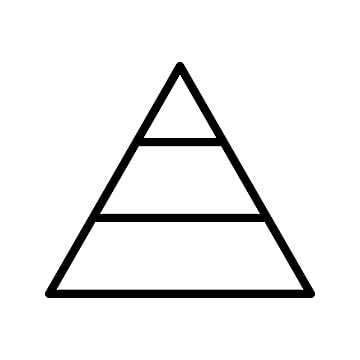
At the bottom, you have people searching for a wellness item, like a Sauna. They know they want a Sauna, but they're not sure about the type or brand of Sauna they want.
Above them, you have people looking for a Sauna. They know the type they want but are exploring different brands to find the best fit.
At the top, you have people searching for a specific type of Sauna from a specific brand. All you need to do is place your store (representing and distributing that brand) in front of them and capture the sale.
Now imagine the same pyramid.

But applied to your store and its 3 main sections.
Those being:
- Home Section
- Collection Pages
- Product Pages
The Home Section is for people near the bottom of the pyramid.
Its purpose is to build trust.
You do this by making it look clean and functional, showing off good reviews, and telling your brand story.
Here’s an example:
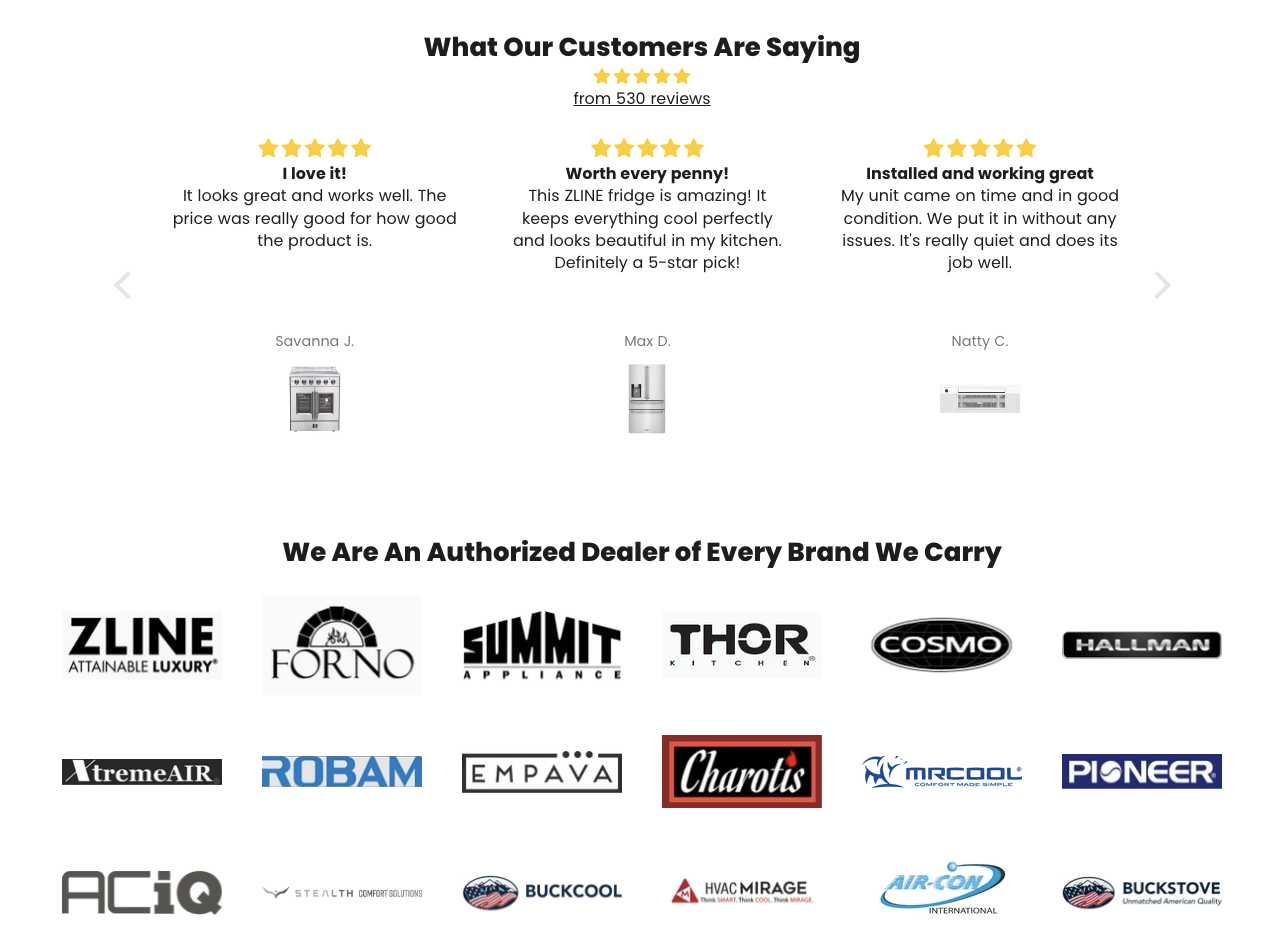
The Collection Pages are for people in the middle of the pyramid.
They aim to provide clarity.
You achieve this by giving customers clear information that helps them make decisions and understand which product might be best for them.
Here’s an example:

The Product Pages target people at the top of the pyramid.
The job of product pages is to convert.
To do this, you need to give them good reasons why they should buy this product.
You do this with persuasive writing, social proof, reviews, and more.
You want to show them why this is the product they need and why they should pick it over something else.
Here’s an example:

When you set up your store like this, you address every type of customer.
Since our products are expensive, it takes longer for customers to decide to buy.
This way, you guide them through the process and don't miss out on any potential sales.
And that's how you create and organize a good high-ticket store.
Closing Partnerships with Suppliers
Now that you've set up our store, it's time to make some partnerships.
I've talked about how important suppliers are, but here's another thing to think about:
Getting new suppliers is like investing in a stock that pays you every day.
You're the middle person between these brands and the people who want them.
So, the more suppliers you work with, the more customers you can reach.
By adding more and better suppliers, you can make more money.
It's one of the easiest ways to increase your revenue.
So how do you make these partnerships happen?
The Supplier Acquisition Framework
It's crucial to know that these brands and suppliers receive hundreds of emails every day.
If you want to partner with them, you need to take this process seriously and make yourself stand out.
To do that, the first step is to create a pitch deck.
1: Pitch Deck
A pitch deck is a great way to tell suppliers what your goals are and demonstrate the value you can bring to their brand.
The pitch deck needs to have these five key parts:
- Introduction of yourself and your brand.
- Your core values (what you believe in).
- Your value proposition (what you can do for them).
- The benefits of working with you.
Go to Canva, search for “Pitch Deck,” and pick from a wide range of templates. You don't have to design all the graphics from scratch.
Here’s an example of a Pitch Deck I made in 10 minutes with Canva:
SLIDE 1 (INTRO):
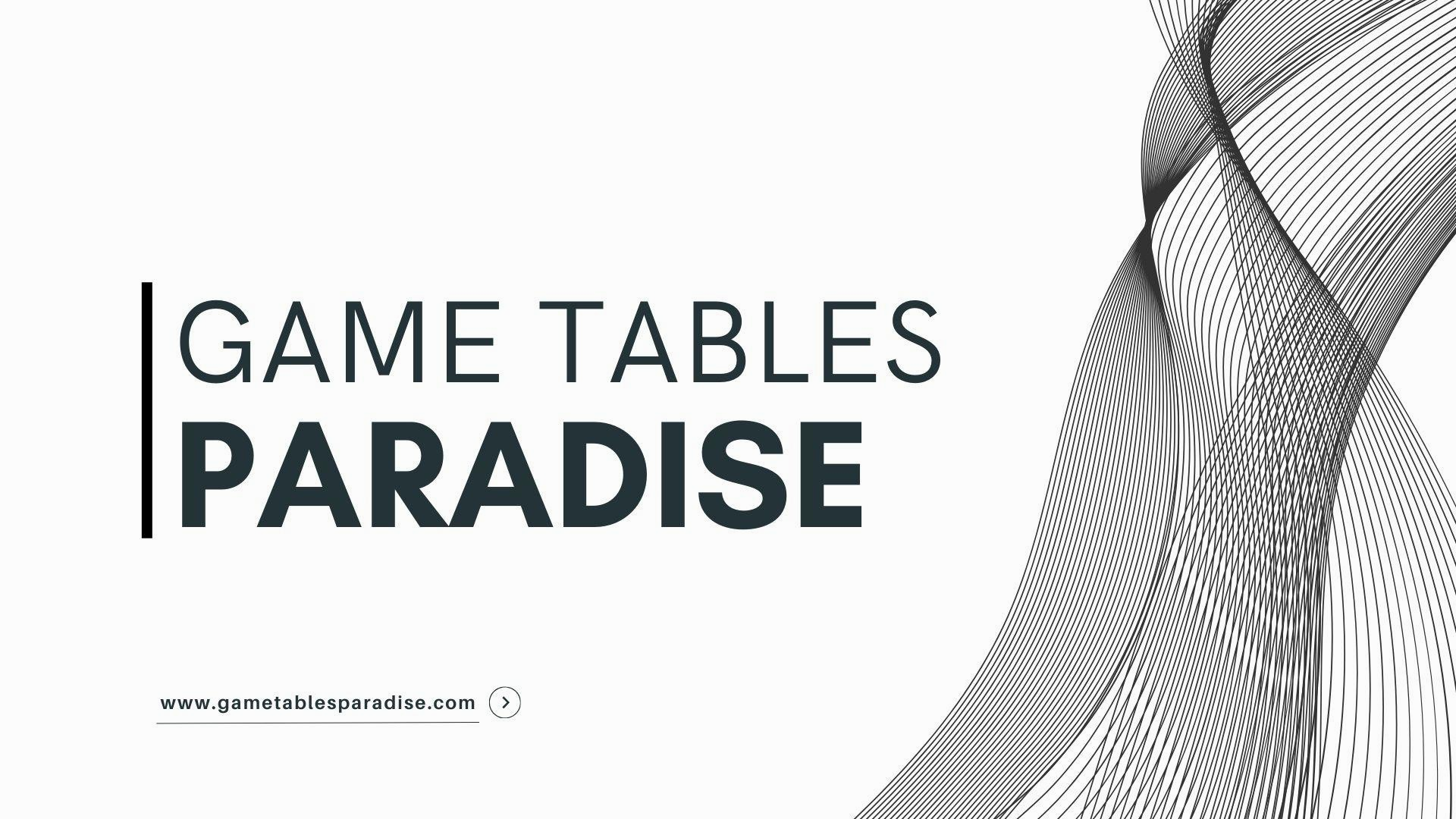
SLIDE 2 (TABLE OF CONTENTS):

SLIDE 3 (PERSONAL INTRO):
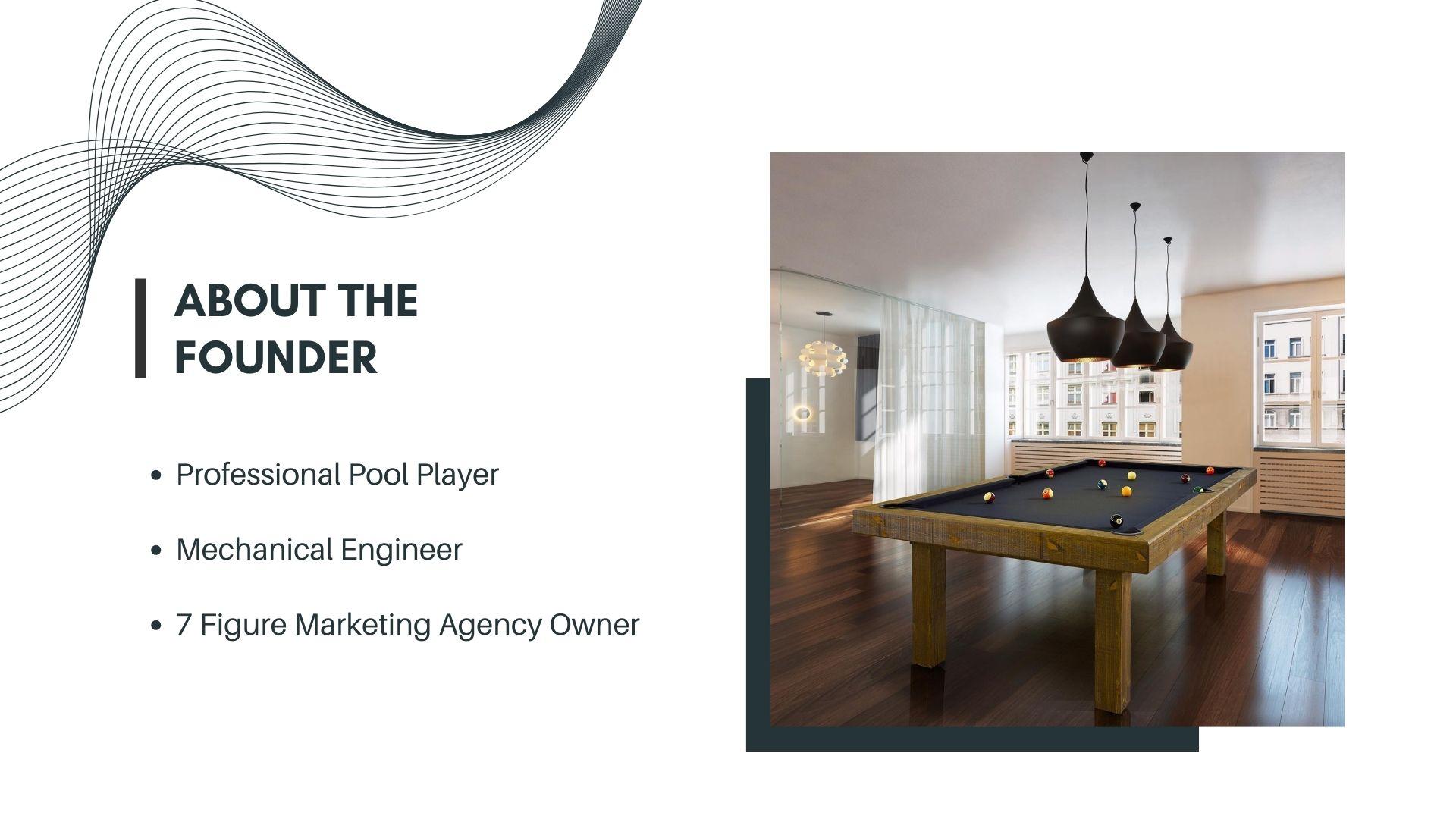
SLIDE 4 (WHY WE CHOSE TO SELL THESE PRODUCTS):

SLIDE 5 (MARKETING PLAN):
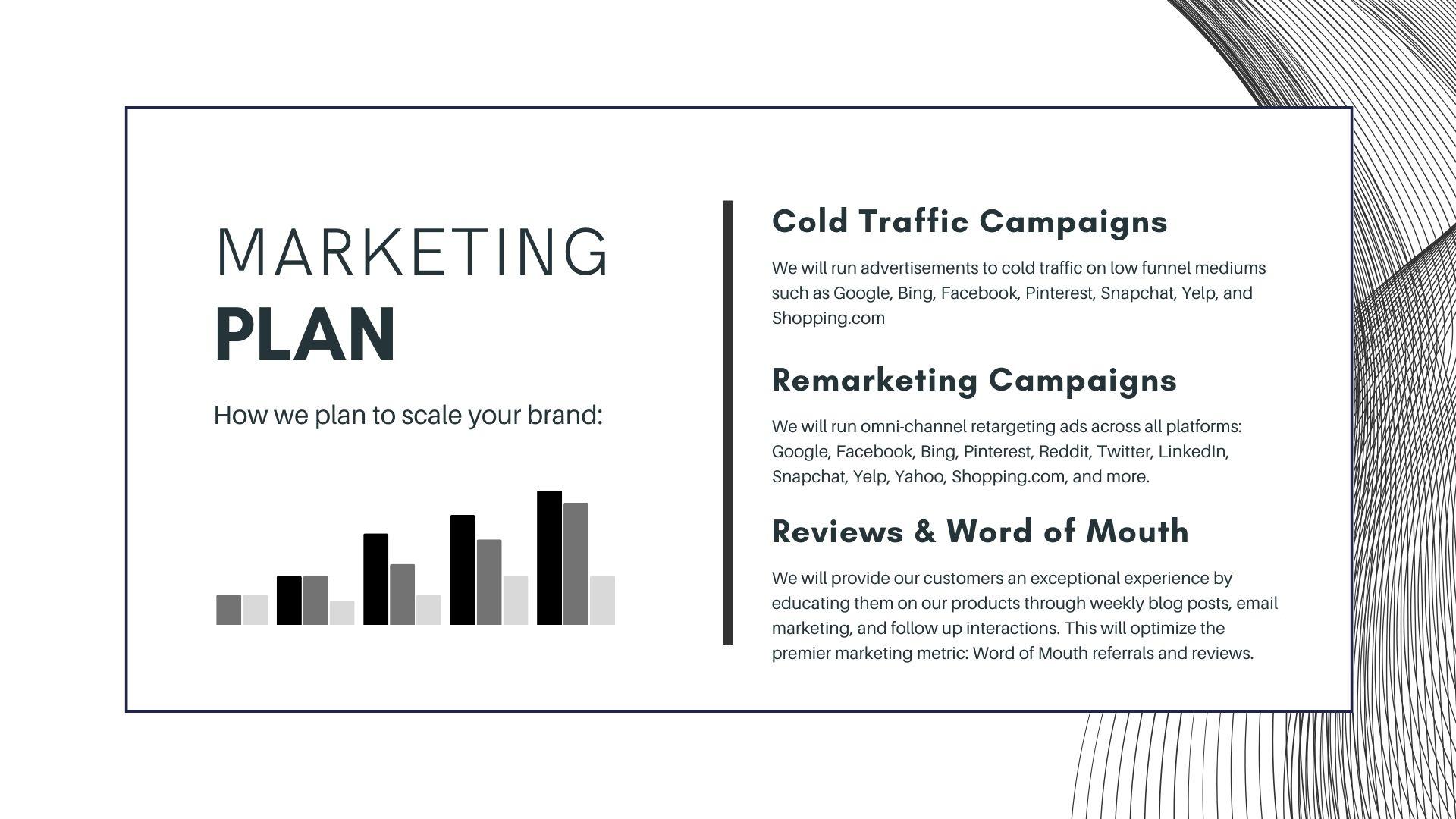
SLIDE 6 (ELEVATING THEIR BRAND):
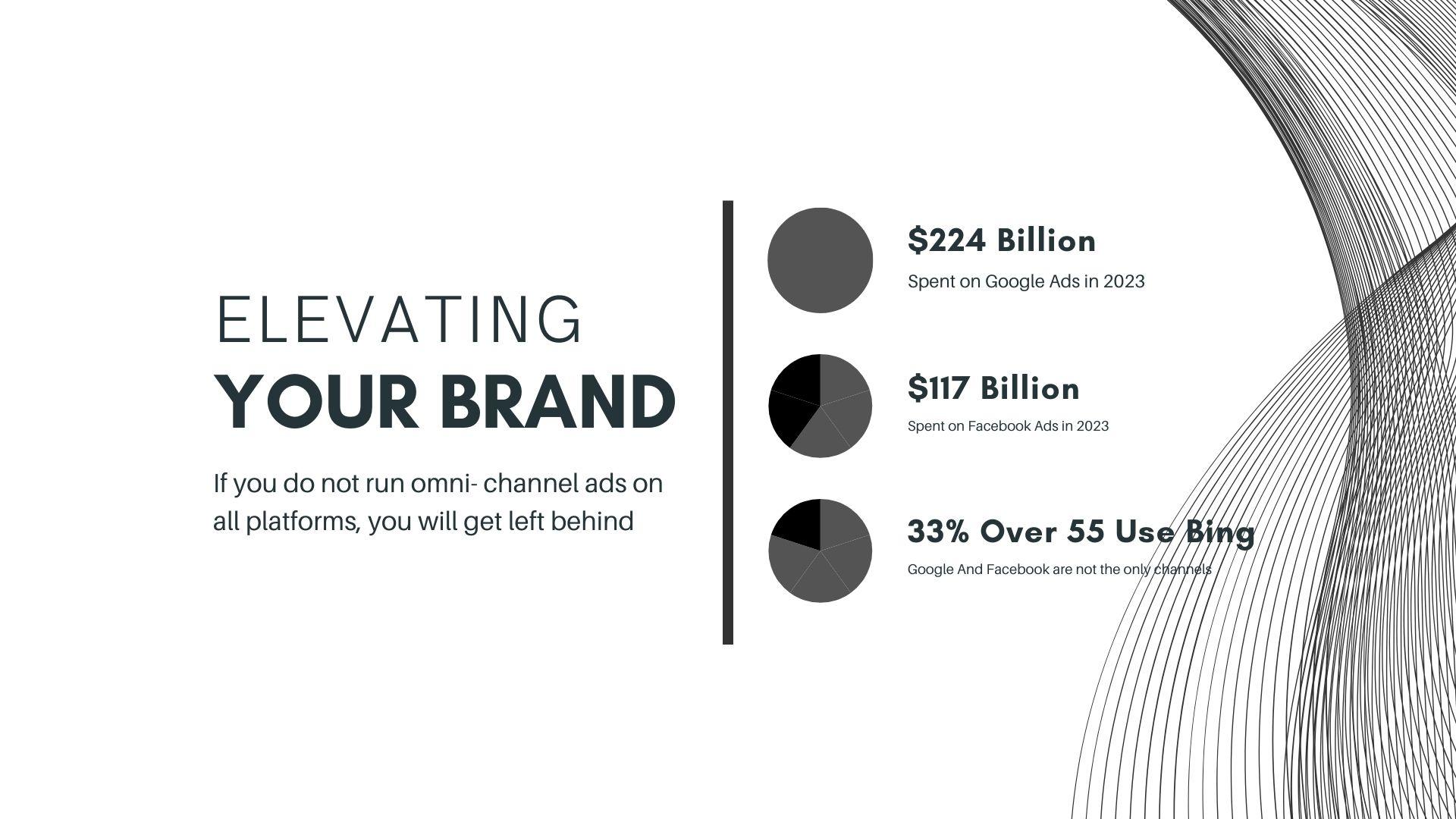
SLIDE 7 (CORE VALUES):
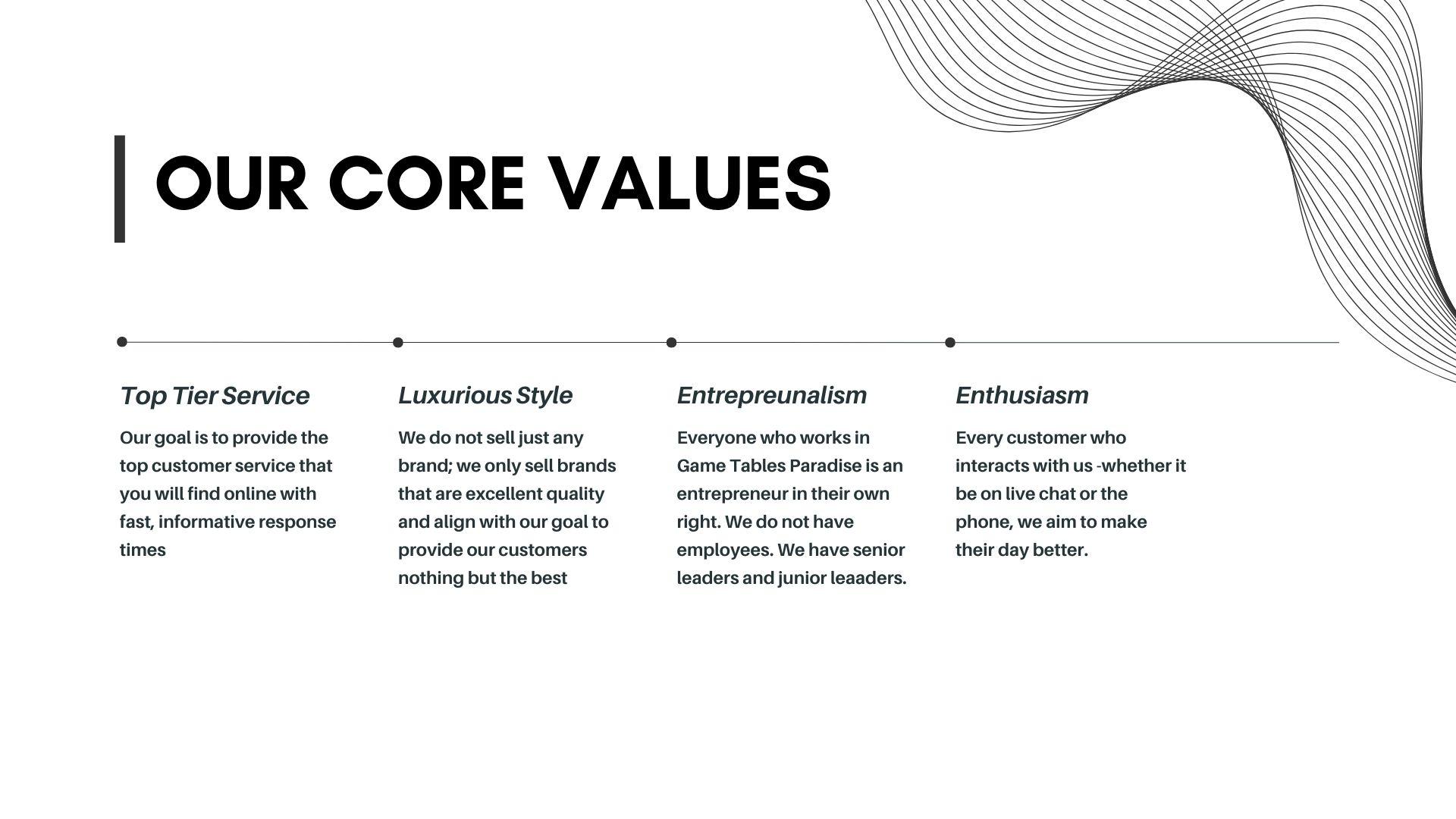
SLIDE 8 (VALUE PROPOSITION):
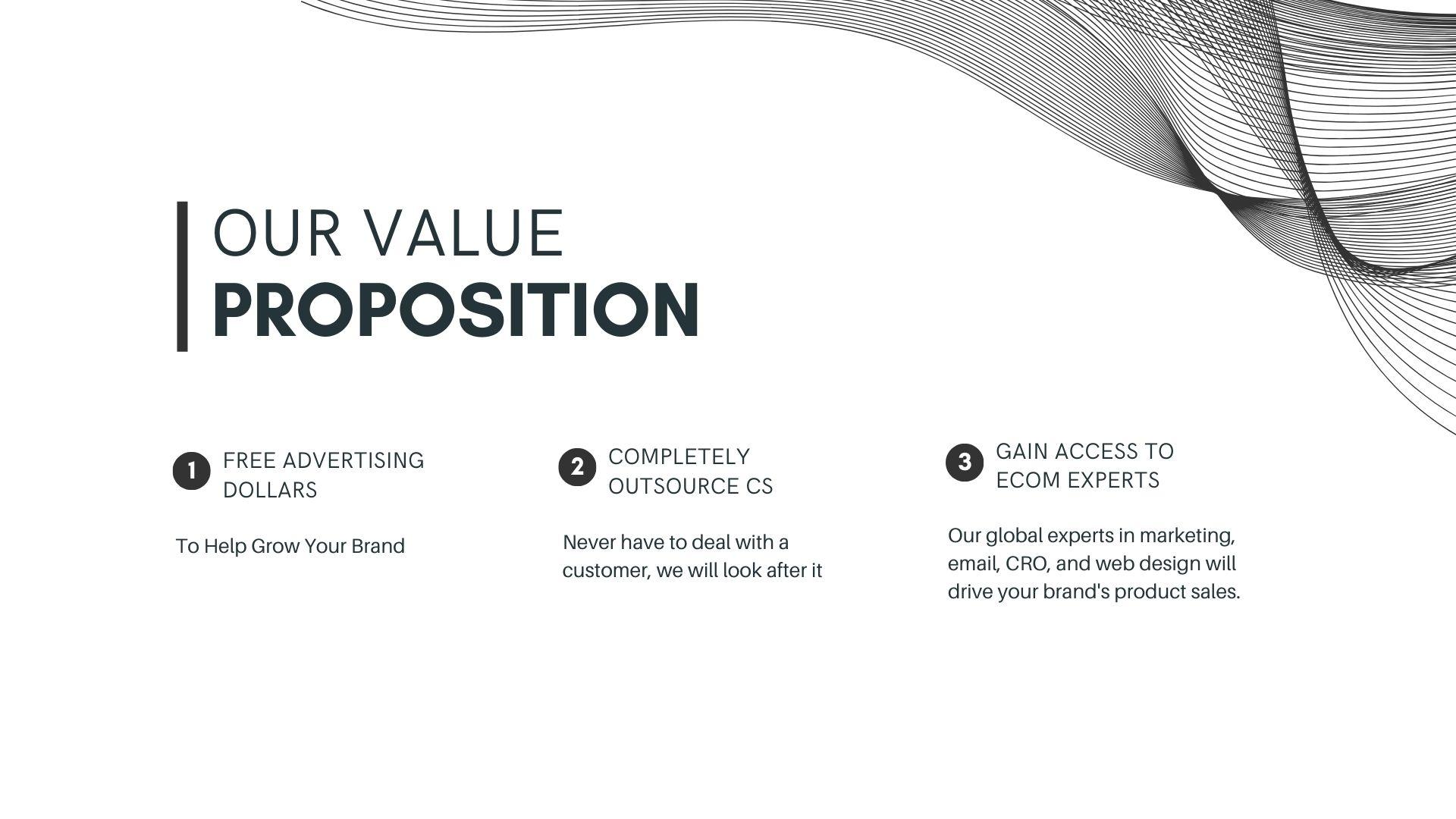
SLIDE 9 (WHY WORK WITH US):
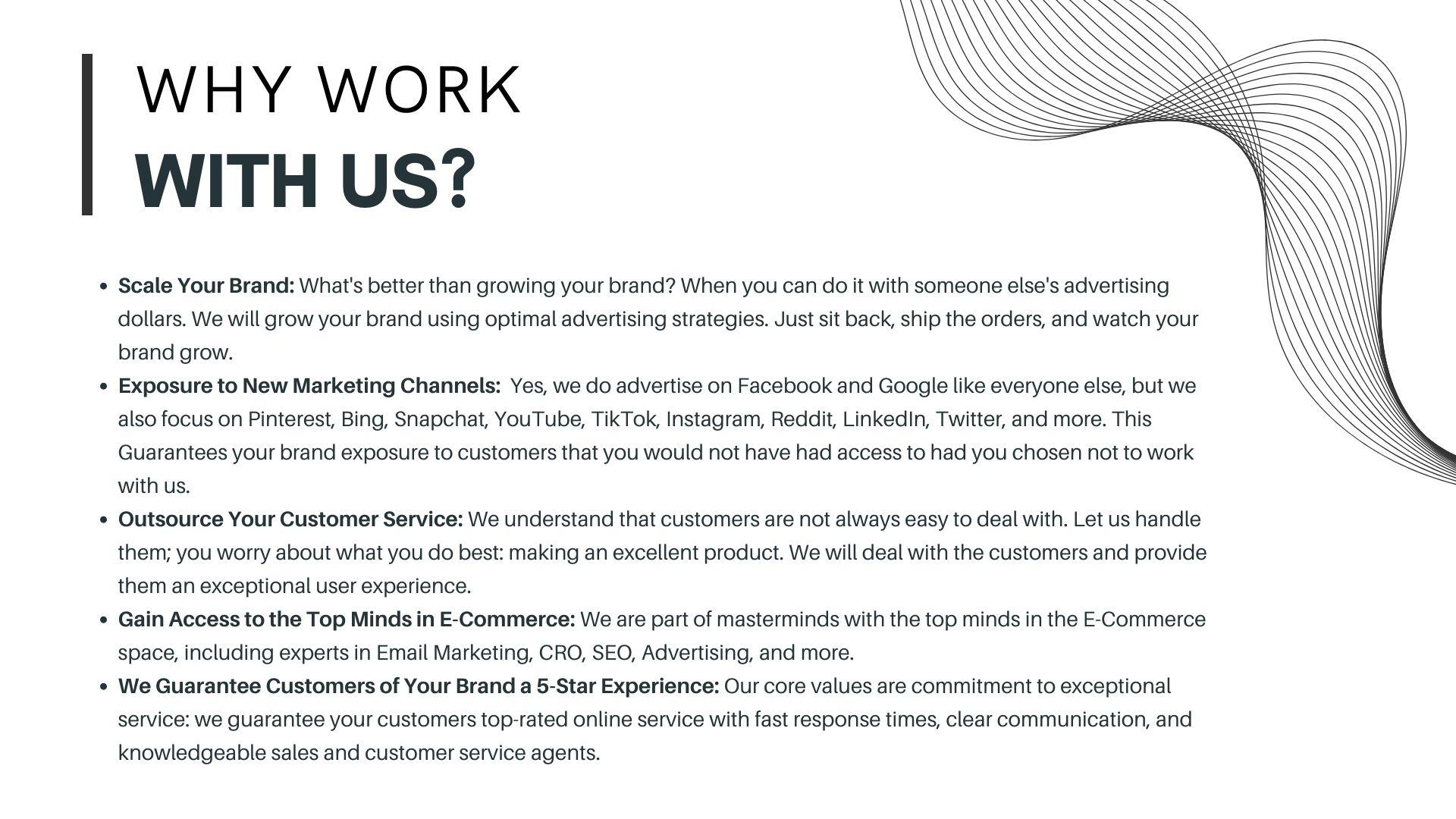
SLIDE 10 (CALL TO ACTION):
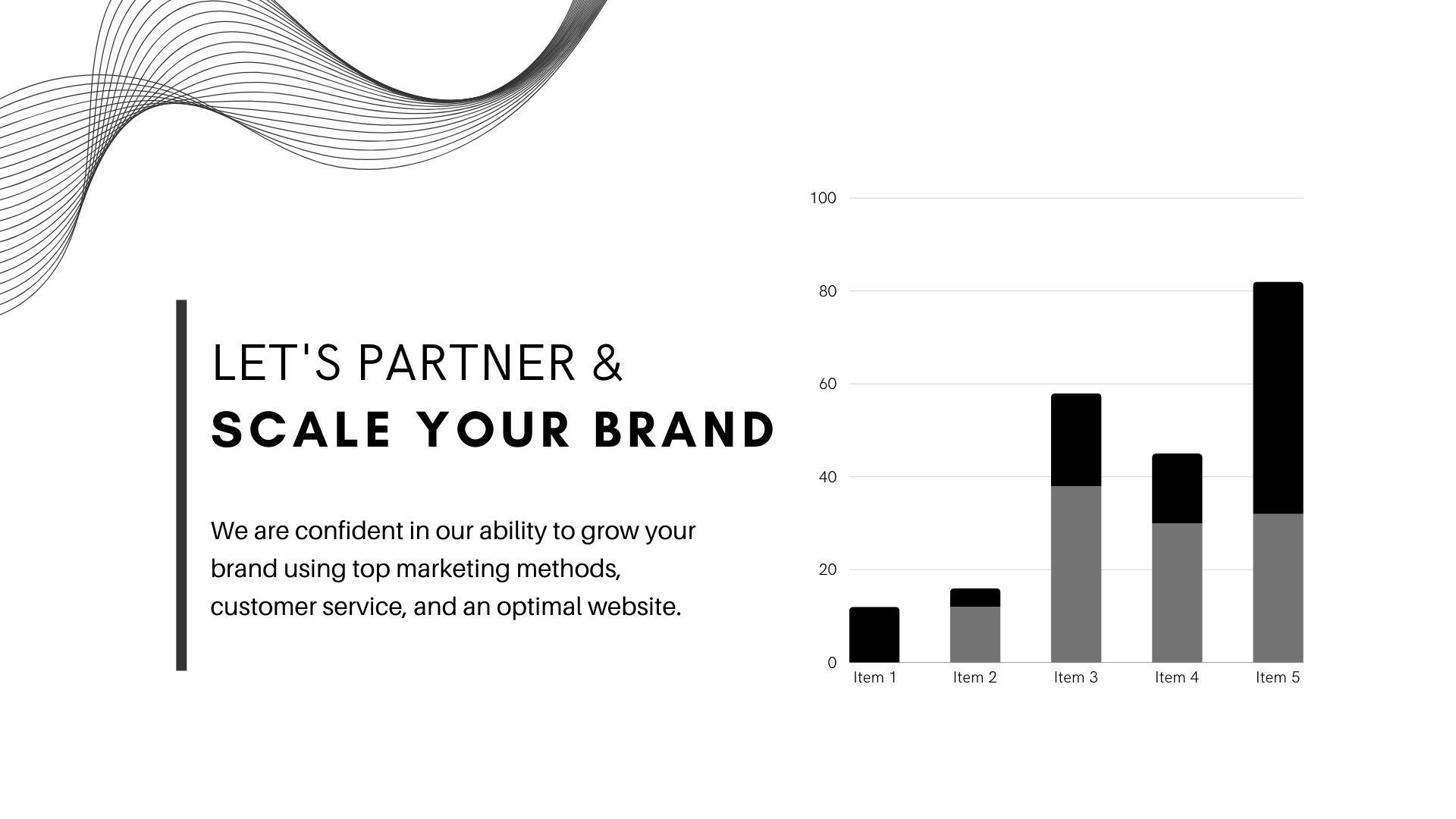
SLIDE 11 (THANK YOU)

That's it. This is just an example. You'll want to customize it to fit your niche and your personality. Don't copy anyone else and be unique in your pitch deck.
Once you have your pitch deck ready, record a video explaining it.
This is what you'll send to your suppliers.
2: Outreach Sequence
Once you get the person’s name and email address, this is where we'll set up our outreach campaigns.
Here’s what the campaigns will look like:
- First Contact
- Follow-up (3 days later)
- Follow-up (3 days later)
- Second Contact
- Follow-up (3 days later)
- Follow-up (3 days later)
Keep contacting them until you get a response. “Yes” or “No” is what we’re looking for.
Be persistent, and keep following up.
Use Apollo.io or Hunter.io to find different contacts to follow up with if the person is not responding.
You can also use an extension called Mailtrack that tracks if they opened your email (optional).
3: Outreach Script
Here’s the script you’ll be using in this sequence.
Email 1 (Assuming did not speak with on phone)
Hi [name],
I am the owner and CEO of [your store]. We are an eCommerce brand in the [niche the target is in] niche. We are in the process of partnering with new suppliers in the [niche] space to build out this section of our store.
My team has been doing research for the last month, and we believe that [brand] would be a high-potential partner to add to our [niche] collection.
We are confident that we can play a large role in growing the [brand name] brand with our omnichannel marketing strategy, plan for customer success, and strong branding.
Could you please connect me with the correct person to speak with about opening up an online retail account?
I have attached a video introducing myself and my brand for your review.
If you have any further questions for me, please book a call with me at the link below.
I look forward to working together and growing [brand name].
Thank you for your help,
[your name]
Email 1 (Assuming did speak with on phone)
Hi [name],
It was great chatting with you. As discussed, I’ve attached the PowerPoint that gives you a brief introduction to our store and brand.
Please advise me on the next steps on how we can get set up as an online retailer.
Thank you for your help,
[your name]
Email 2
Hi [name],
Did you have a chance to review my video below?
(OPTIONAL) – We’ve recently partnered with [brand competitor] name and we’ve had a ton of early success in the [niche]
Can you please let me know how to open up an online retail account with [brand]?
Thanks,
[your name]
Email 3
Hi [name],
I am very confident that we can add a ton of value to your brand and help grow your sales using our omnichannel marketing and customer retention-based approach.
Is there someone else that I should contact about opening up an online retail account?
[your name]
Using these scripts alone, you can close suppliers through email.
But if you do end up having to hop on a call, never say “dropshipping”. Suppliers don't like that.
And that's it.
Once this is done, you'll have everything you need to import the products to your store.
Then all you have to do is repeat this process at scale to close more suppliers over time.
2 – Launch and Iteration
Now that you have your store built with products ready to sell, it’s time to launch your business.
And for that you need…
A proper Ads strategy that specifically targets people who are already searching for what you’re selling
Once again, like many of the examples before, the Ads strategy used for High Ticket eCom is completely different from traditional dropshipping.
For High Ticket eCom, your main Ad platform will be Google.
You'll still use other platforms to retarget people who've seen your brand before. But Google Ads will be the main driver of revenue.
Here's a simple analogy:
With regular Facebook Ads, you're playing a losing game.
Ad costs go up over time because it's a bidding war. The ones with the most money win.
So your ads eat into your profits over time.
Plus, Facebook doesn't offer much long-term ROI besides building your customer list.
But with Google, it's different. It's more efficient at targeting your ideal customers and has a positive compounding effect.
Your Google Ad spend directly boosts your SEO. So you're not only getting short-term sales, but you're also building long-term organic reach.
Keep this up for 3 to 4 years, and you can run your store solely on organic traffic and retargeting ads.
That's how you build a true, long-term asset.
So how do you run a proper Ad strategy with High Ticket eCom?
The Paid Advertisement Framework
Now just like with our store-building example, I’m not going to walk you through a Google Ads tutorial.
Instead, I’m going to show you the high-level concept of what makes a good ad structure for High Ticket eCom.
To demonstrate, let’s go back to our pyramid example:
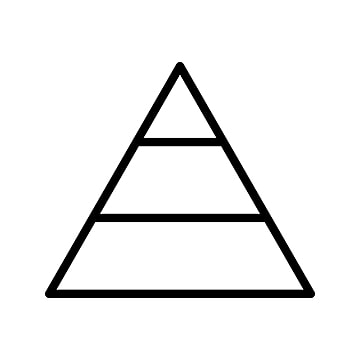
We know that the top of the pyramid has the customers most likely to buy.
So, you're going to use an 80/20 approach.
That means 80% of your advertising will target the top 20% of potential customers.
By doing this, you'll boost your conversion rate and reduce your CPM.
How do you make this happen?
You focus on keywords and searches that only people at the top level of awareness would be looking for.
You tailor your ads specifically for that top-of-the-pyramid group.
After they've visited your site and become aware of your brand, you hit them with retargeting ads on all platforms until they make a purchase.
And once you've found a product that's selling well and converting with high-profit margins…
3 – Systems and Scale
Once you have ads running profitably, it simply becomes a game of volume, iteration, and optimization.
So this is when we build for scale.
A well-functioning system that refines and optimizes all of these pieces as you add volume to your Ad Spend and Sales.
As I mentioned earlier, High Ticket eCom is quite different from traditional dropshipping. It's more about the long-term.
Now is when you begin focusing on SEO, improving your CRO, and building a team to handle tasks and automate your business.
I won't go into details here because this is further down the line. But these are the final pieces you need to scale your revenue to millions.
Summary
So as you can see all you need to do is:
- Setup a Proper Business based in the USA that sells high-quality products from USA warehouses (You need this to actually deal with high-ticket suppliers)
- Get into a Niche that consists of Products that already have built-in demand and people consistently searching for them.
- Build a list of potential Partnerships with Reliable Suppliers that facilitate you selling high-quality high ticket products and push volume on them.
- Build a Niche Store with a Theme around the products we’re going to sell that resonates with the customers we’re targeting.
- Close Partnerships with Reliable Suppliers that facilitate you selling high-quality products and push volume on them.
- Create a proper Ads strategy that specifically targets people that are already looking for what you’re selling and are ready to buy.
- Develop a well-functioning system that refines, and optimizes all of these pieces as you add volume to your Ad Spend and Sales.
And if you just follow these steps, you should be able to reach at least $10k/month profit within the next 24 weeks.
Just like many others starting out in any field, I had no idea what I was doing.
I learned these lessons and everything I'm sharing with you in this document through trial and error.
But eventually, I made my first $50k month in January 2024. 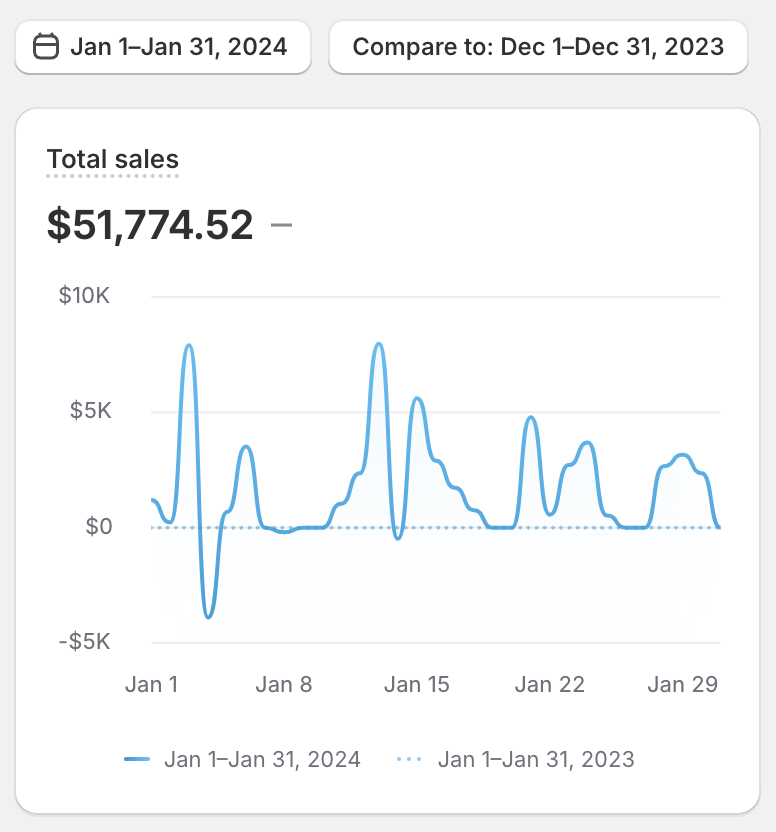
And from there, I continued to make more sales. 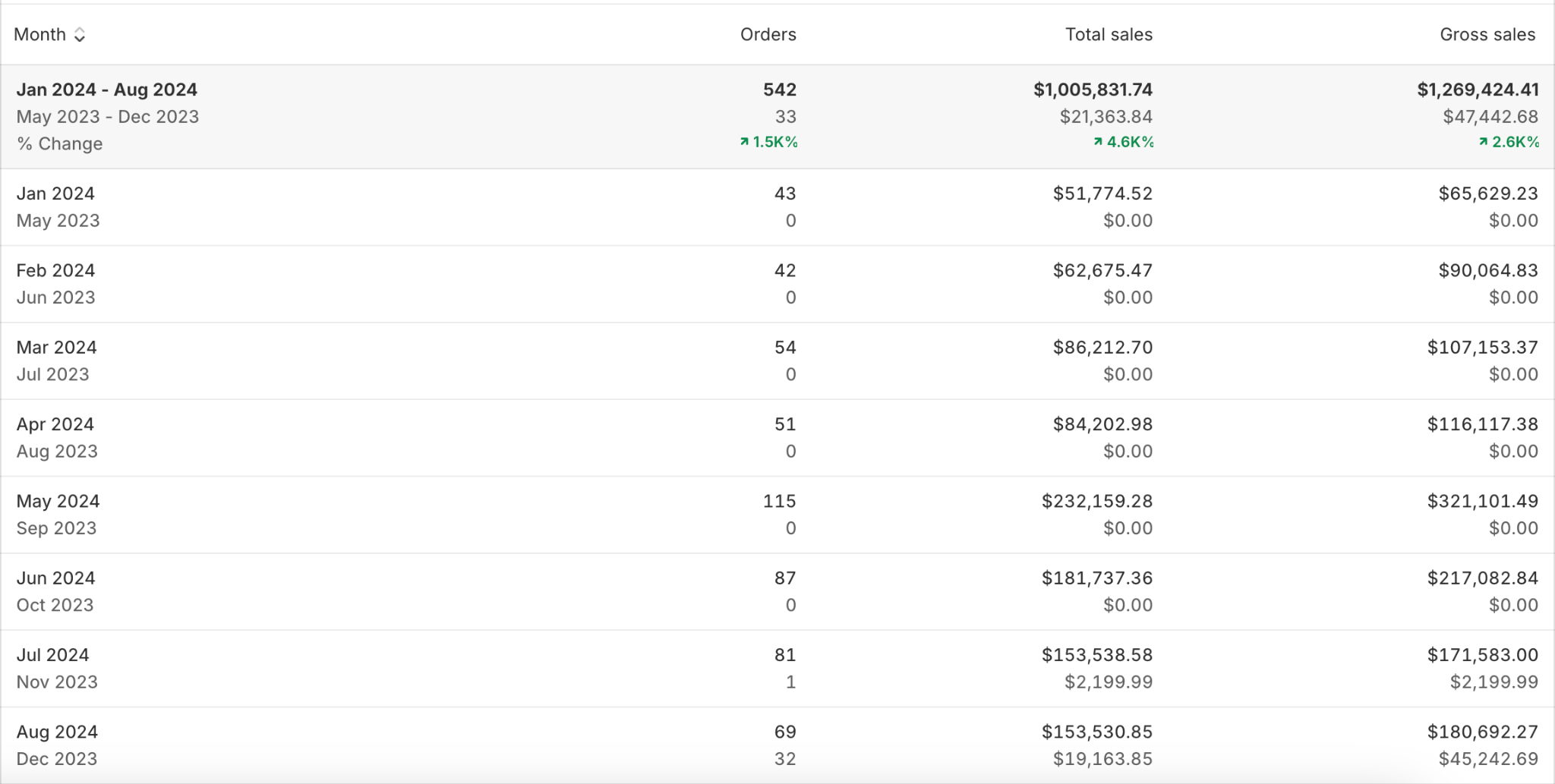
Screenshot of my first 8 months doing High Ticket eCom 👆
And then I went on to have $20k+ days. 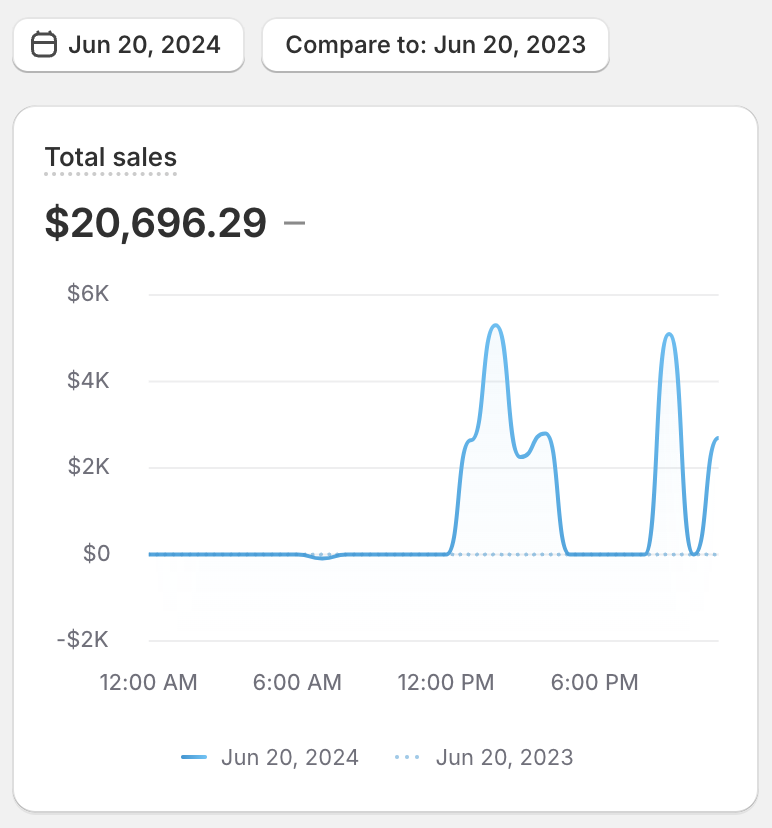
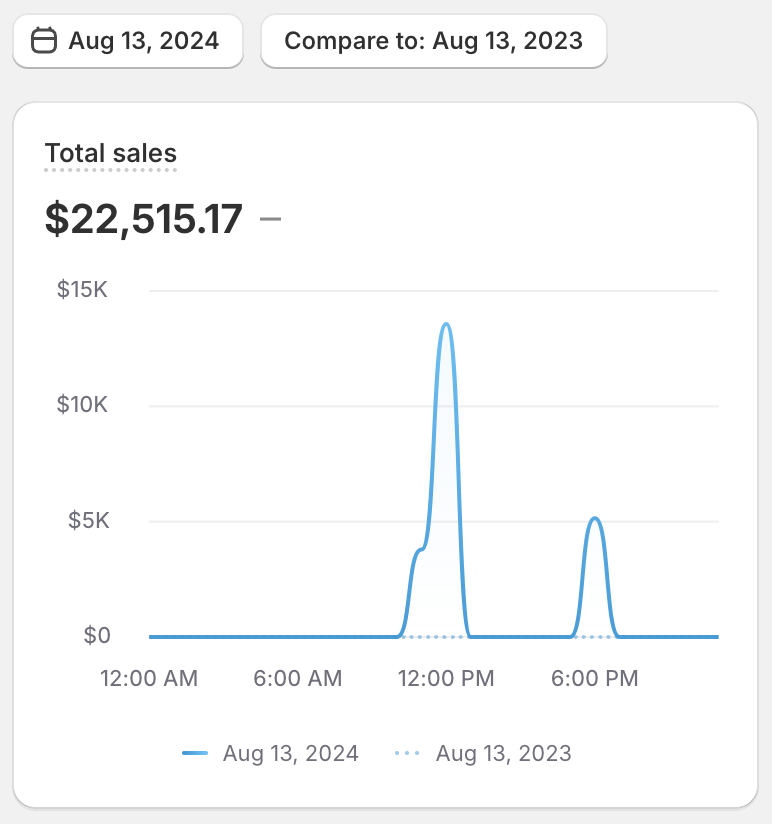

So just trust me, if you just apply what’s in this document, you’ll be able to get to at least $10k/month profit in the next 24 weeks.
So what Now?
You have a few options.
Option 1: You can keep doing what you've been doing, hoping for a change. But how much longer can you keep going without seeing results?
Option 2: You can follow the process I've outlined in this document. If you stick to it, you'll eventually see success, but it might take a bit longer. There are still some things I couldn't cover here, and you'll have to figure out some things on your own.
Option 3: You can work directly with me. Follow my exact step-by-step instructions, make your first high-ticket eCom sale within the next 60 days, and achieve at least $10k/month profit within the next 24 weeks.
This option is for you if:
- You've tried launching an eCommerce store before and failed.
- You're currently struggling with the traditional dropshipping model.
- You want to start a proper eCommerce brand but lack the funds to buy large inventory.
- You have a regular job and want to transition into an online business.
- You've tried other business models but haven't seen results.
The aim is to help you make your first High Ticket eCom sale within the next 60 days and reach $10k/month profit within the next 24 weeks.
Here's exactly how it’s going to work:
Business Setup:
I'll show you and directly help you set up a proper business.
This includes LLC, business phone number, business address, business bank account, and business credit card.
Everything step-by-step.
Niche Selection:
I'll show you exactly how to do Niche Research.
After we come up with a list of niches you're interested in, I'll help you pick the most profitable one and suggest the best products to sell in that niche.
Supplier Research:
I'll show you what to look for in suppliers, how to find them, and how to get in touch with the decision-makers.
Plus, I'll provide you with a ready-made list of over 50 suppliers in your chosen niche, along with all the necessary information to start contacting them right away.
Store Building:
I'll guide you through the step-by-step process of creating a high-converting High Ticket eCom store.
Most importantly, I’ll help you build the first version of your store so there’s nothing left to chance.
Closing Suppliers:
I'll show exactly how to set up an automated outreach system and provide you with proven scripts for closing suppliers.
I'll also get on a call with you to help you set up the entire outreach system, which will handle all outreach on autopilot without you having to lift a finger.
Setting up Ads:
I'll teach you how to use the Ad Platforms and I'll help you build your first Ad campaign, so it’s properly set up from the beginning, helping you make your first sale as quickly as possible.
Systems and Hiring:
I'll show you how to find affordable and competent Virtual Assistants (VAs) to help manage your store.
I'll also help you develop Standard Operating Procedures (SOPs) to train them, and create systems for SEO and CRO to increase conversions and scale smoothly and stress-free.
What does it look like on the inside?
- You'll have access to the “HTD Mastermind” Discord Server for 6 months (we can discuss extending this if needed).
- You'll have access to all the training material for a lifetime.
- We'll be working together for as long as you want.
During that time you'll have direct access to me through your private channel in Discord and Zoom as well.
You’ll have access to the exact strategies from the top minds in eCom
The goal is to get you to $10k/month profit (minimum) in the next 24 weeks. If you put in the work, it will happen.
How sure am I?
I guarantee that if you haven't reached at least $5k/month (profit) by the 6-month mark, you can keep working with us for free until you hit that.
So if you're tired of:
- Struggling with traditional dropshipping
- Being stuck in an unfulfilling traditional job
And if you want to commit to reaching $10k/month profit with your store as fast as possible, DM me the word “HT” on Instagram or Twitter (X).
Still unsure?
Many of the students who joined during the initial launch are already seeing sales and remarkable results: 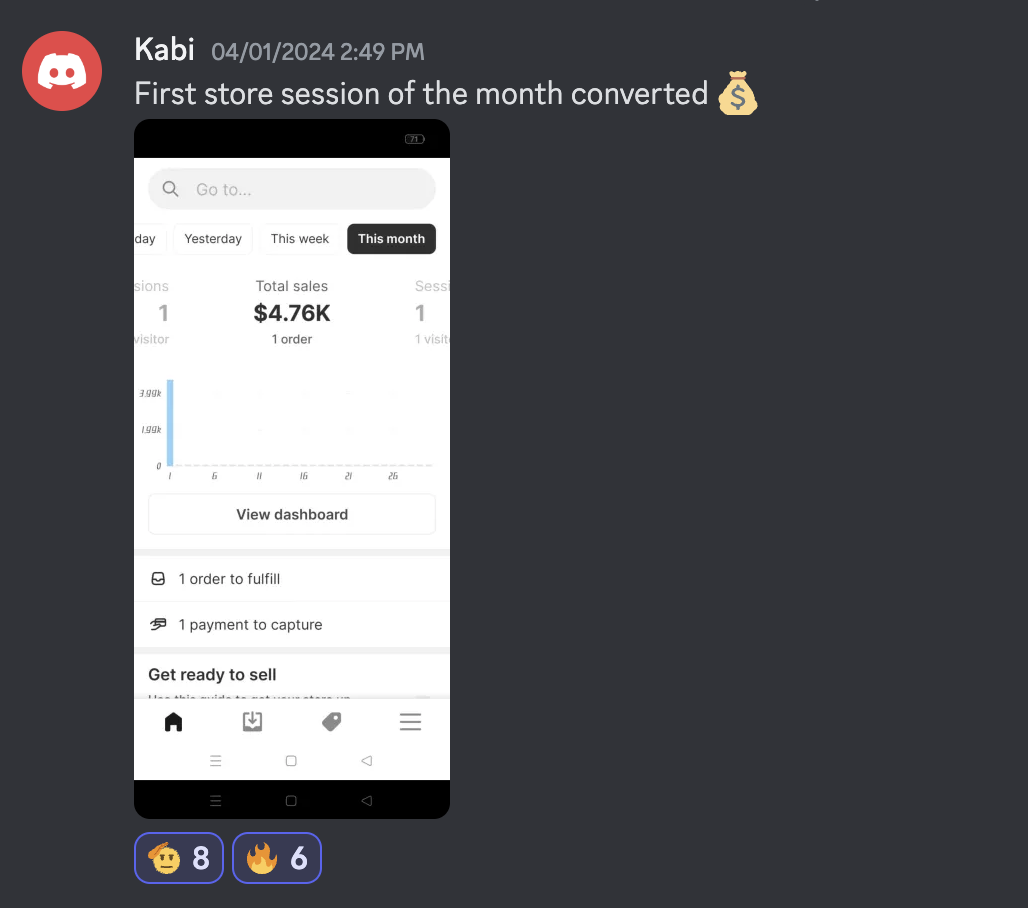
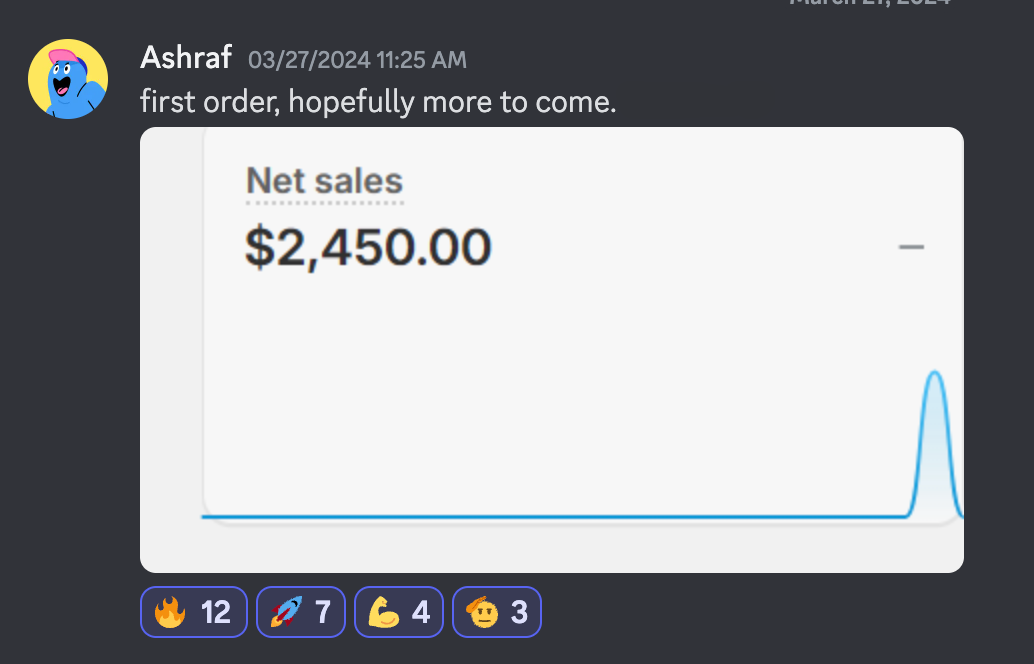
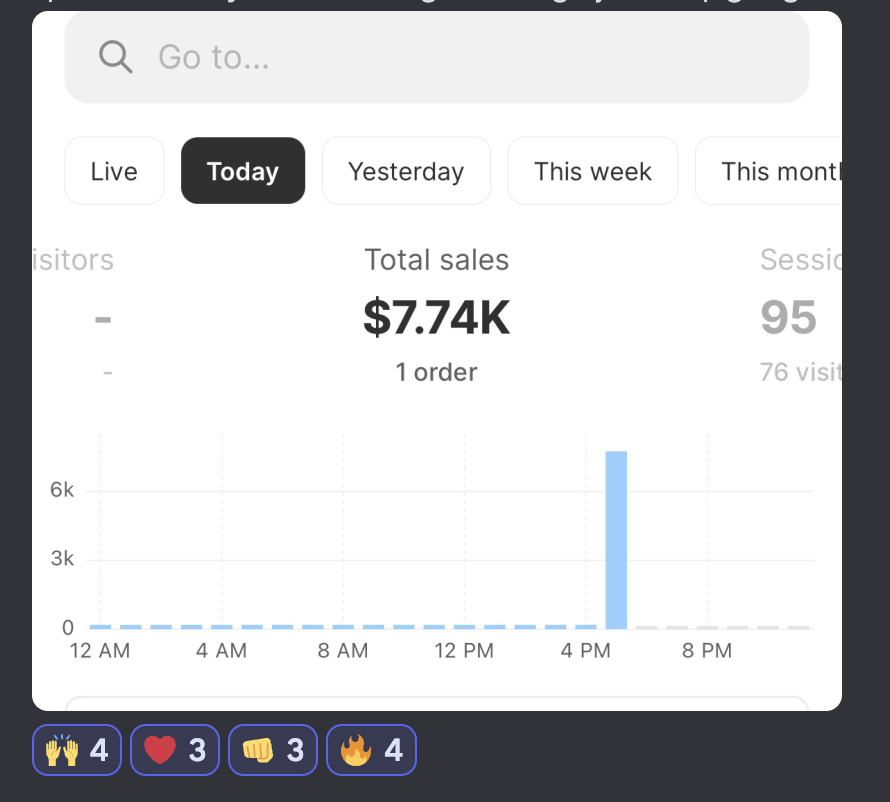
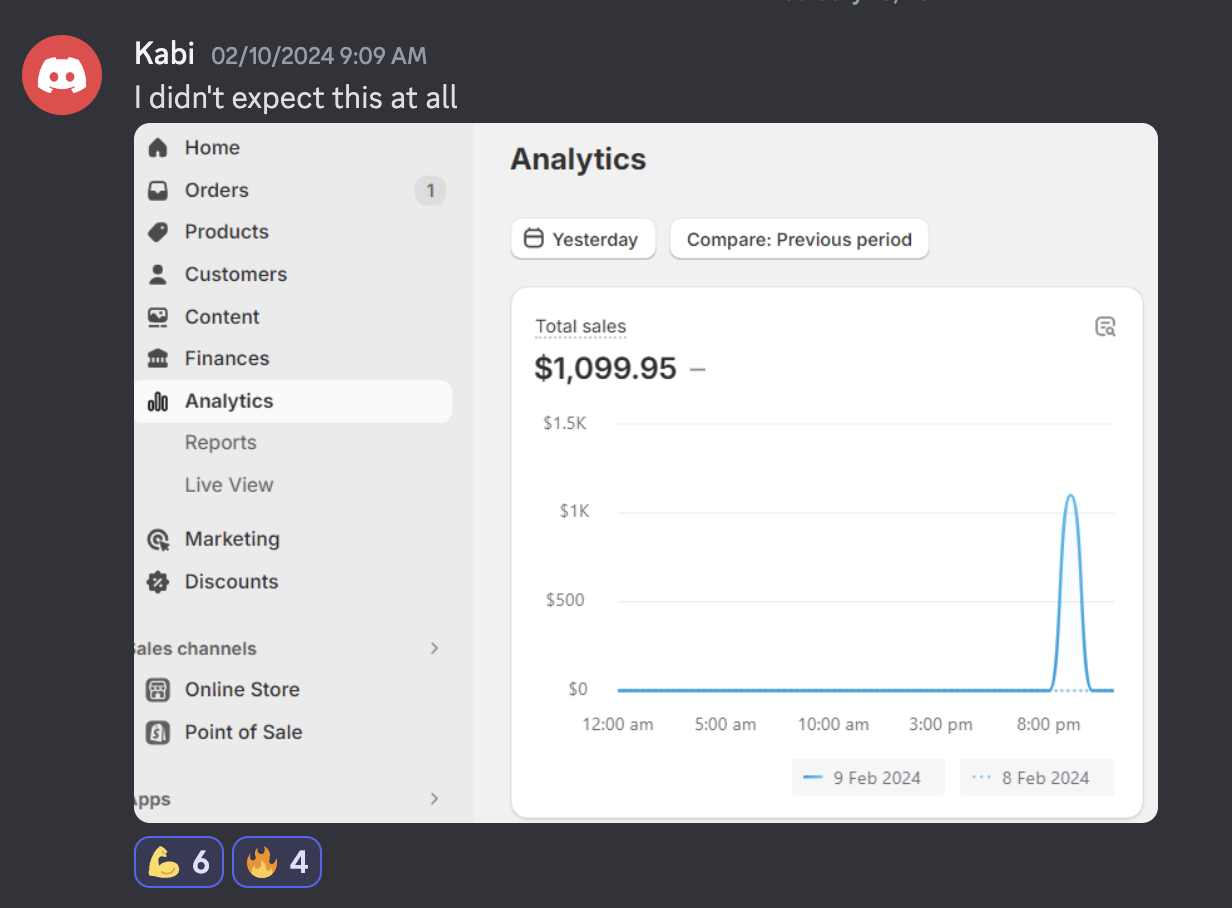
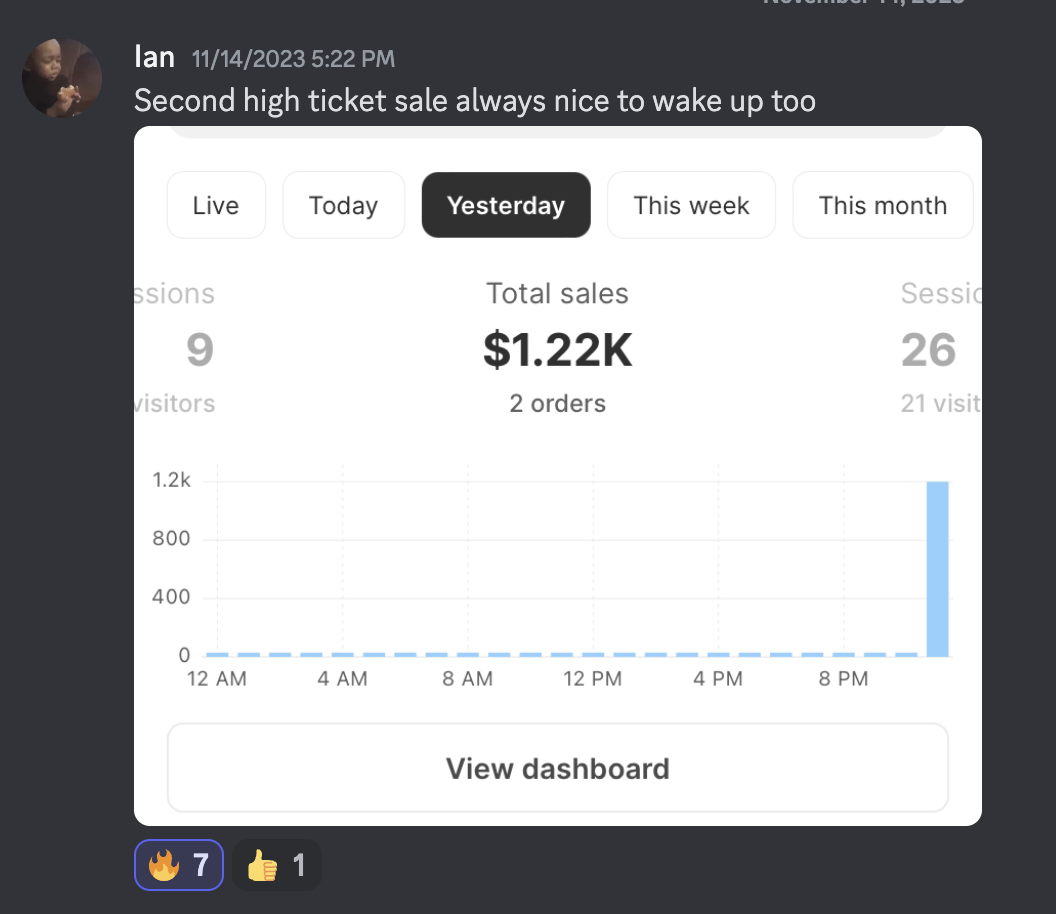
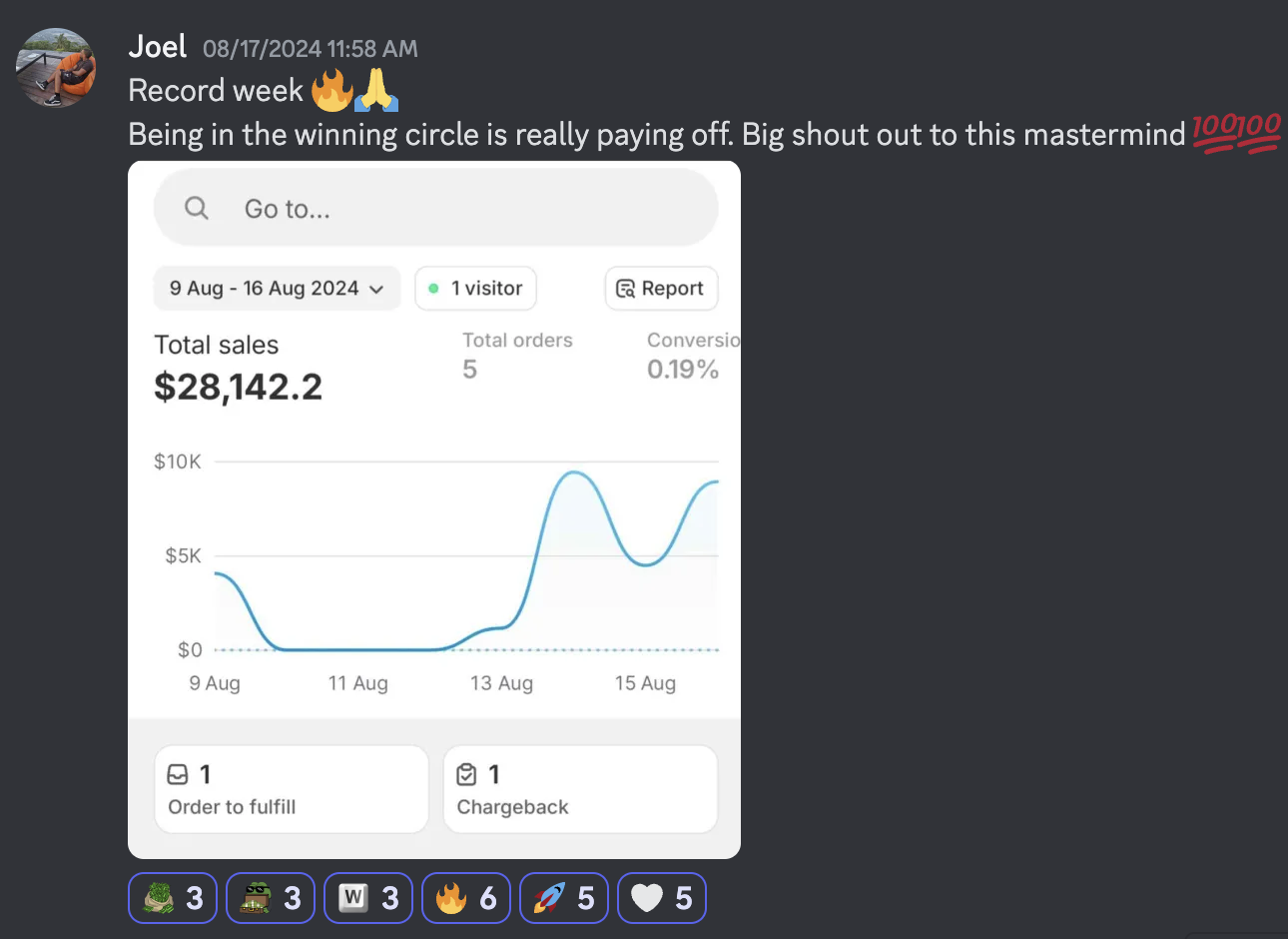


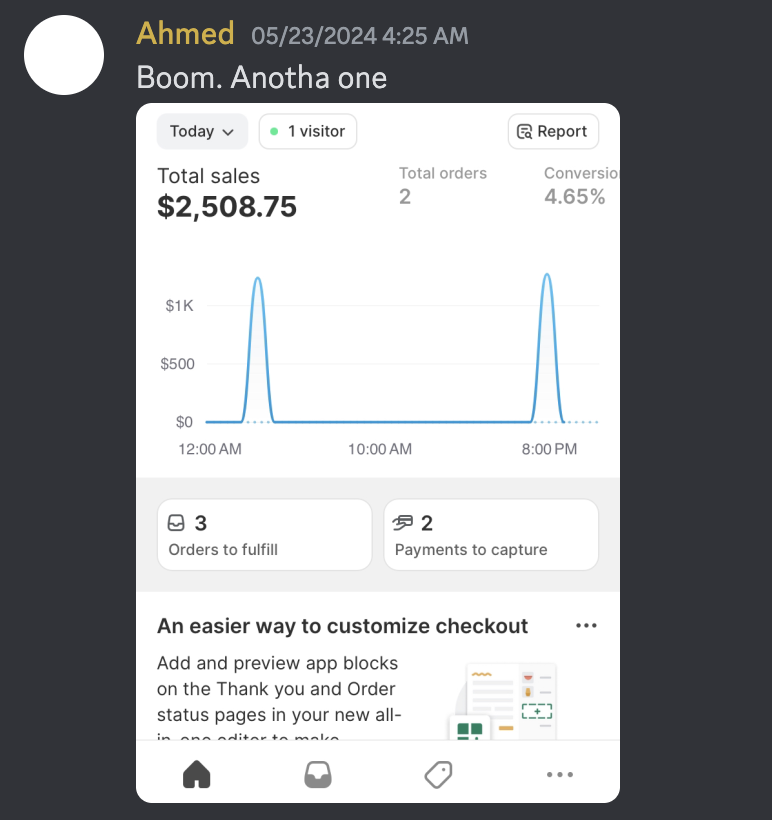
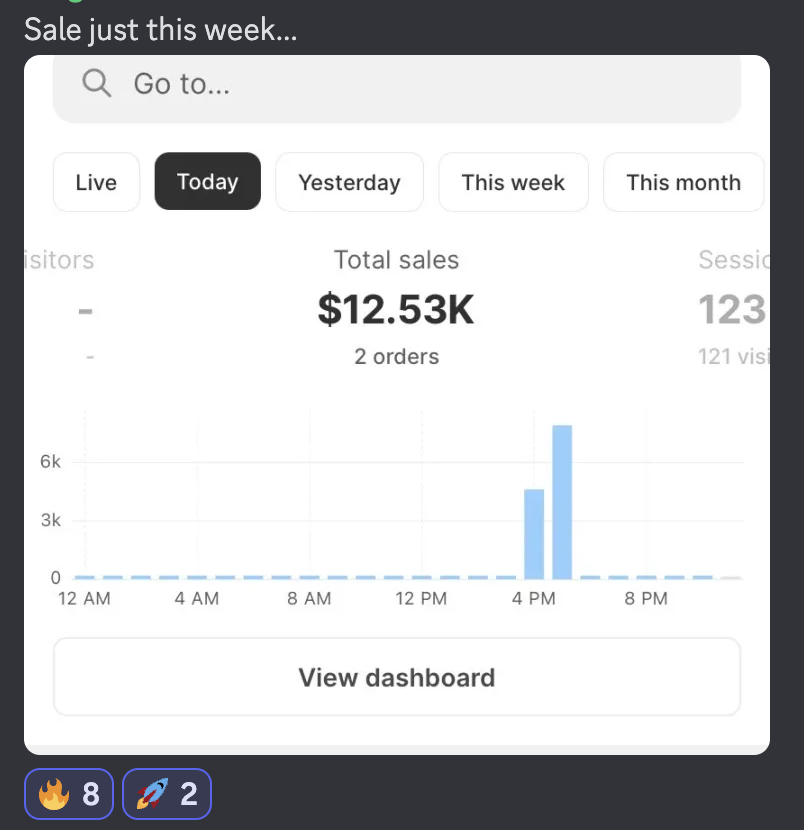
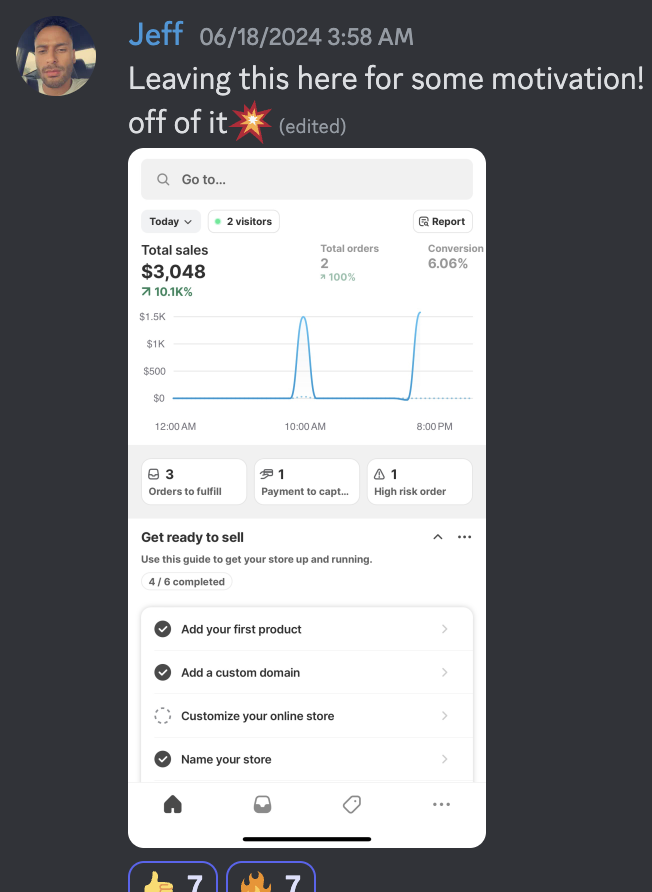
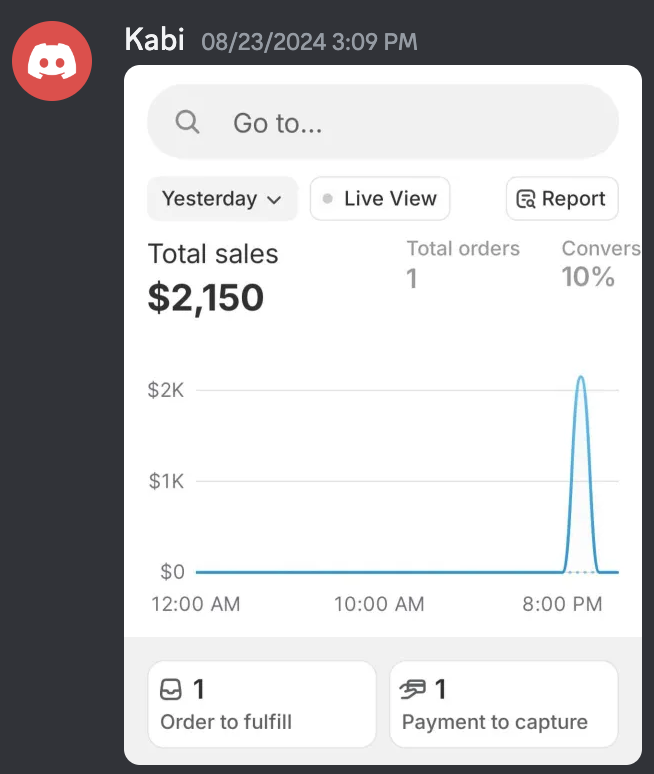

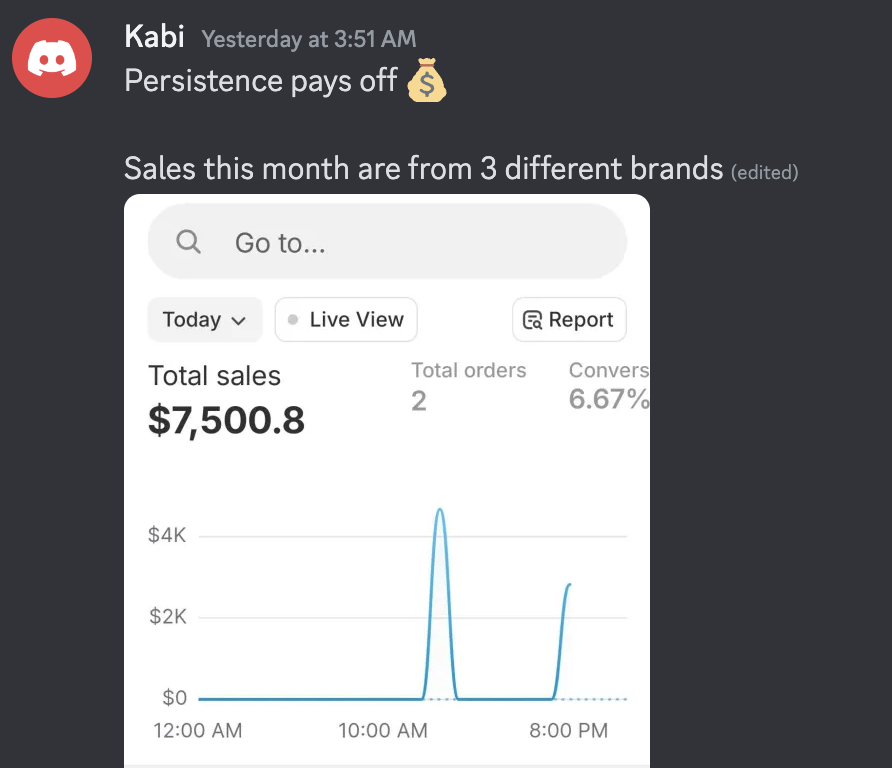
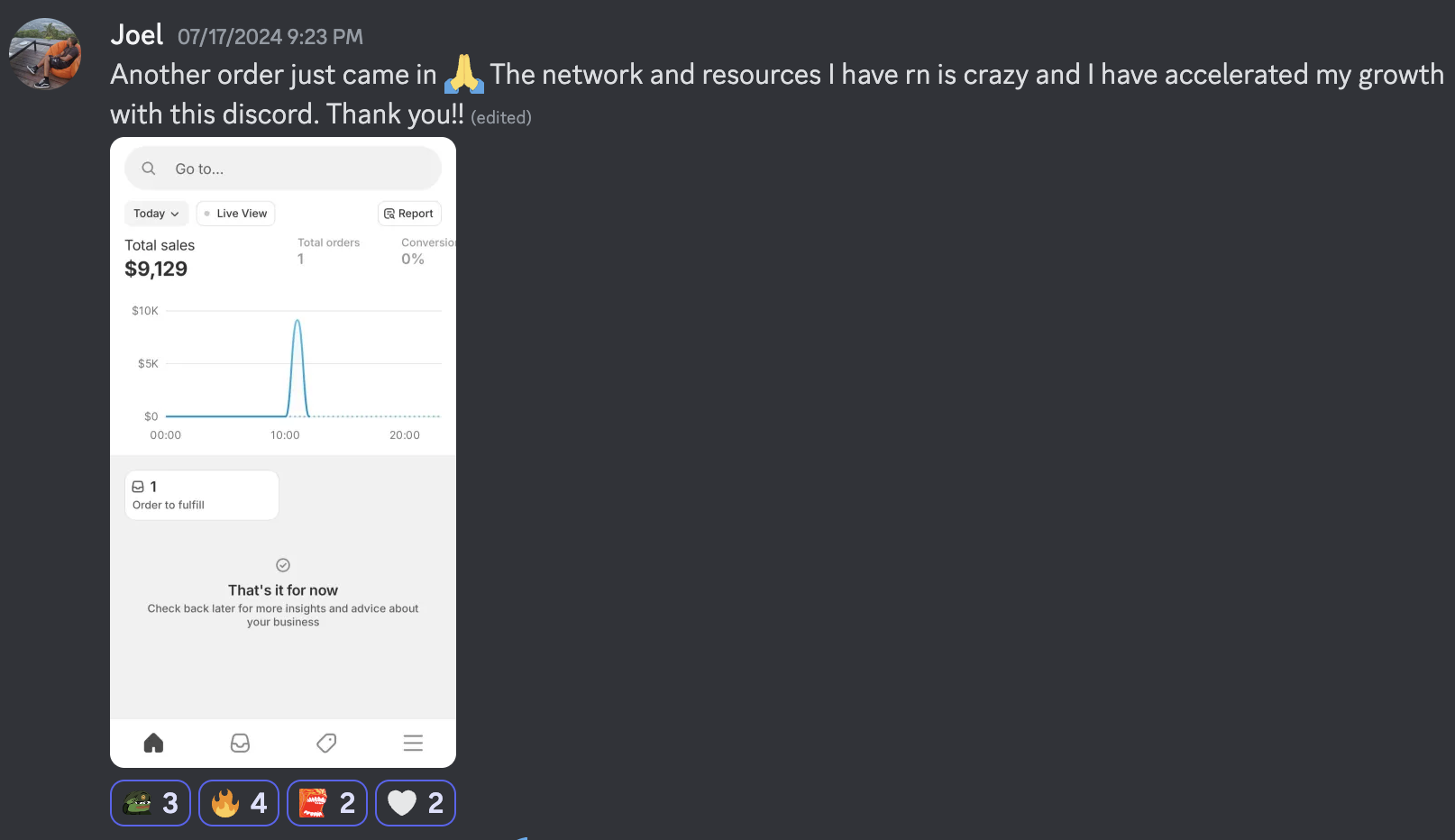


If you're still unsure, feel free to join my free Discord Server and see the results of the students for yourself: discord.gg/NSfqqUVqbP
If you're ready to start a store and hit $10k/month profit as soon as possible, DM me the word “HTD” on Instagram or Twitter (X).
Talk to you soon
– Khalid






Comments 0 Responses